BOOK IT TO COMO LITERARY EVENTS
PAGE 17
A LOCAL FARMER HAS THE MOO-VES PAGE 18
TRY THESE FLAT-OUT TASTY TORTILLAS
PAGE 35
FRESH FALL THREADS FOR THE GUYS
PAGE 38
Nonsensical laws. Discouraged citizens. Busted bills. Welcome to your government, Missouri.
PAGE 26
 THE VOICE OF COLUMBIA • NOVEMBER 2018
THE VOICE OF COLUMBIA • NOVEMBER 2018
fresh beef
100%
cooked only when you order.
Now serving the hotter and juicier Double Quarter Pounder® w/ Cheese.
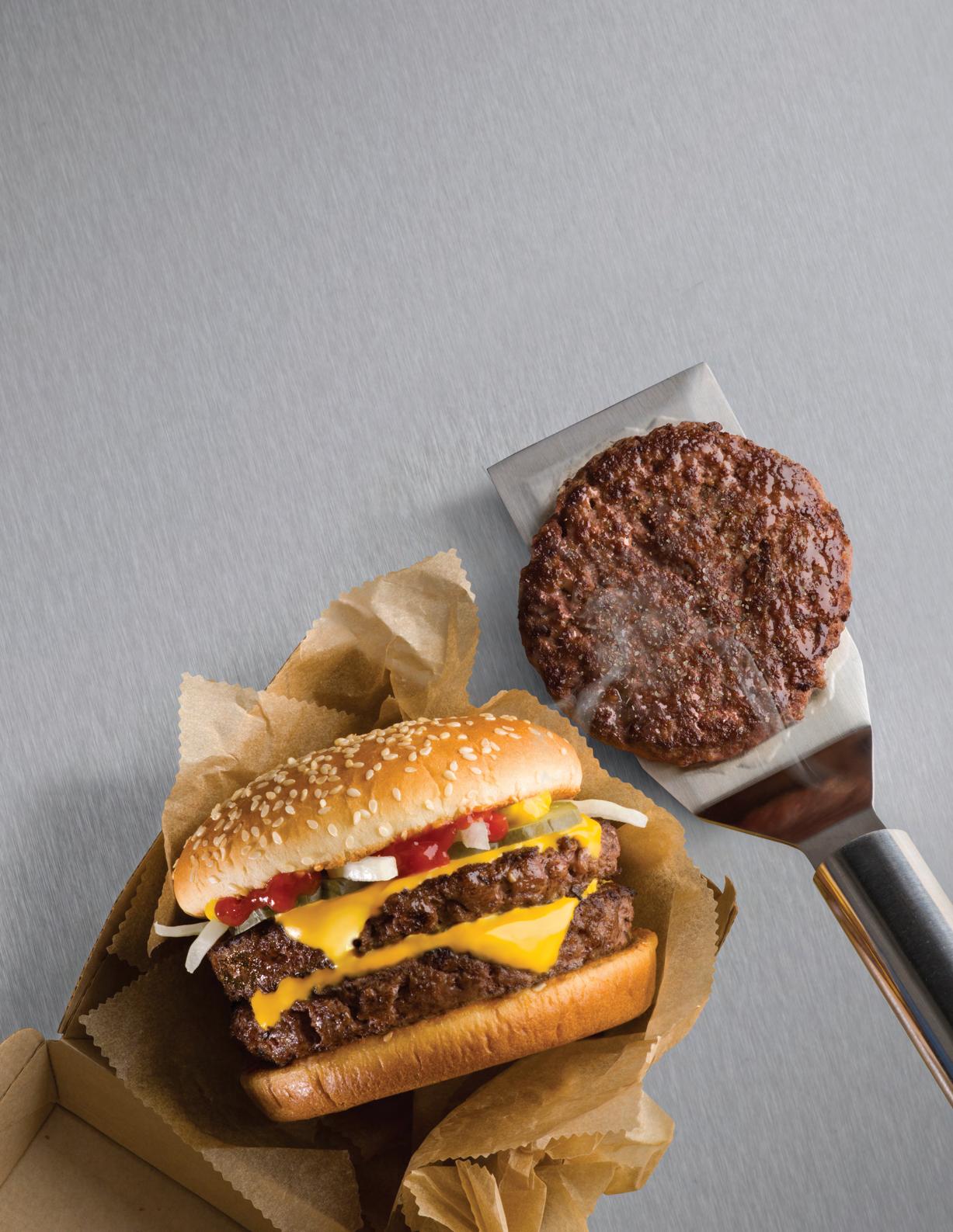 Columbia
© 2018 McDonald’s Corporation
Columbia
© 2018 McDonald’s Corporation















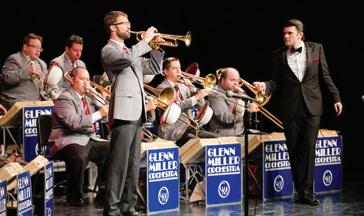



BOX OFFICE 203 S 9th Street | Columbia 573-882-3781 www.concertseries.org Rosario Andino, pianist Friday, November 2 | Missouri Theatre US Army Jazz Ambassadors Wednesday, November 7 | Jesse Auditorium MU Choral Union: Handel’s Messiah Thursday, November 15 | Jesse Auditorium Missouri Contemporary Ballet Friday/Saturday, Nov. 16 & 17 | Missouri Theatre Great Russian Nutcracker Wednesday, November 28 | Jesse Auditorium NOVEMBER 111 Seasons of Bringing Performers of Prestige to Mid-Missouri
EYES WIDE OPEN
I’ll open with this: If you’re faint of heart, I wouldn’t recommend reading the next 250-some-odd words.
I was 12 years old the first time I watched someone castrate a bull. My best friend’s family owned a farm in eastern Colorado, and I was invited to take part in their annual branding weekend. We corralled, branded and in some cases — castrated — more than 150 head of cattle. As an annoying 12-year-old know-it-all in the midst of his first middle school health class, I thought I could handle just about anything.
That changed quickly when my friend and his 8-year-old brother held a 300-pound young bull while their dad branded it and their mom cut off its … well, yeah, you get where I’m going. The experience — the sights, sounds and smells — shocked me. I’d been around small farm animals and hunted most of my young life, but this opened my eyes to a completely different world. It’s not pretty. It’s not glamorous. For cattle farmers, it’s just their way of life.
In his insightful and eye-opening profile (Page 18), writer Camden Jones takes you on a similar journey with local cattle farmer and semen broker Shea Gentzsch. Beginning with her early days in the Future Farmers of America, Gentzsch has artificially inseminated cattle, now upward of 500 a year for local farmers. She is not unlike many of the people I met during that Colorado weekend: gruff, tough and rough around the edges with a passion for agriculture and providing for others. These folks do the literal dirty work so that the rest of us don’t have to. But I think we often forget the people, families and entire communities behind the food we eat, whether it’s beef, or bacon or salad greens. Their livelihood depends on us, and ultimately, ours depends on them, too.
BEHIND THE STORY
EDITOR-IN-CHIEF
DEPUTY
KEEGAN POPE
EDITOR STEN SPINELLA
MANAGING EDITOR ELIZABETH ELKIN
DIGITAL MANAGING EDITOR MCKENNA BLAIR
ONLINE EDITOR LAUREN PUCKETT
ART DIRECTORS MOLLY NAGEL, KELLYN NETTLES
PHOTO EDITOR JESSI DODGE
MULTIMEDIA EDITOR HUNTER BASSLER
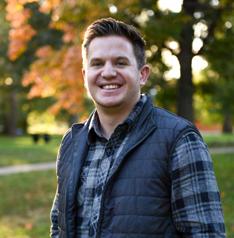
ASSISTANT EDITORS
CULTURE JENNA ALLEN, KELSEY HURWITZ, BOBBI WATTS
EAT + DRINK ELIZABETH QUINN, CATHERINE WENDLANDT
CITY LIFE LAUREN LOMBARDO, LIBBY MOELLER, ROSEMARY SIEFERT
CONTRIBUTING WRITERS JARED ANDREWS, JESSE BAALMAN, SADIE COLLINS, SIOBHAN CONNORS, SHANNON HENDERSON, CHRISTINA
LONG, HANNAH MUSICK, LUCY SHANKER, SAVANNAH WALSH
DIGITAL EDITORS KAELYN ADIX, CAMERON FLATT, JENNA GRUNDTNER, MCKAYLA HELM, JOHN HENIFF, ALEXA HODGES, NAT KAEMMERER, CONNOR LAGORE, HAYLEY ODOM, ABBEY PERANO, MADI SKAHILL, GABBY VELASQUEZ
MULTIMEDIA EDITORS HOPE HOWARD, FENGXALIN LI, ANTOINETTE MILLER, MEGAN SMALTZ, ZIXUAN ZHAO
EDITORIAL DIRECTOR HEATHER LAMB
DIGITAL DIRECTOR SARA SHIPLEY HILES
EXECUTIVE EDITOR JENNIFER ROWE
OFFICE MANAGER KIM TOWNLAIN
Vox Magazine @VoxMag @VoxMagazine VoxMag
ADVERTISING 882-5714
CIRCULATION 882-5700
EDITORIAL 884-6432 vox@missouri.edu
CALENDAR send to vox@missouri.edu or submit via online form at voxmagazine.com
TO RECEIVE VOX IN YOUR INBOX sign up for email newsletter at voxmagazine.com
A little more than a month ago, Vox editors met with Columbia Missourian political reporters to plan a feature about how state government really works. We wanted to create something useful as Missouri — and the country — would be voting in midterm elections. The results were cynical. In examining how government works, we also discovered the many ways it doesn’t. We settled on stories that offer perspective on our political system — and the messy realities of democracy.
—Sten Spinella, Deputy Editor
NOVEMBER 2018

VOLUME 20, ISSUE 23
PUBLISHED BY THE COLUMBIA MISSOURIAN 320 LEE HILLS HALL COLUMBIA, MO 65211
4 VOX MAGAZINE • NOVEMBER 2018
FROM THE EDITOR
KEEGAN POPE Editor-in-Chief
“It’s not pretty. It’s not glamorous. For cattle farmers, it’s just their way of life.”
MAGAZINE
Cover Design by Kellyn Nettles
Shea Gentzsch artificially inseminates beef cattle while continuing her family’s farming legacy.
 BY CAMDEN JONES
BY CAMDEN JONES
26
Home Is Where the Barn Is How Democracy Doesn’t Work
Government doesn’t always function the way we learned in school. Citizens, experts and legislators voice their perspectives on our messy institution.
BY VOX STAFF
5 VOX MAGAZINE • NOVEMBER 2018
Photography by Jason Vance
FEATURES
18
Don’t let the harsh weather hinder your workout wear.
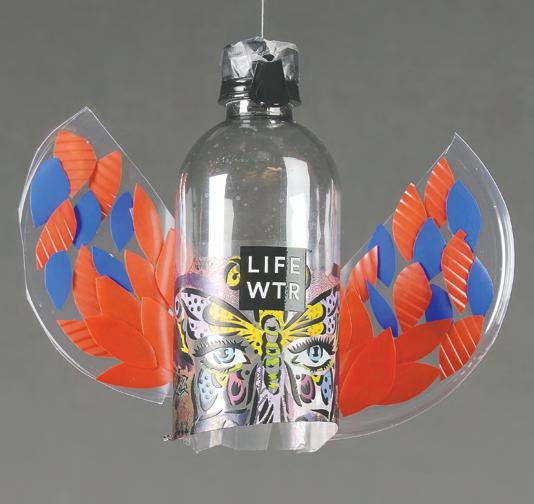



6
VOX MAGAZINE • NOVEMBER 2018 IN THE LOOP 7 Shoot for Ultimate Fandom Prepare for MU basketball season with these five tips. 8 New Noodles A local Thai favorite mixes up its menu and opens downtown. 9 The Last Straw One writer reflects on plastic waste and personal futility. CULTURE 13 Clueless about the ’90s? As If. The best trends from the decade are resurfacing, and we won’t complain. 16 Nameless to Famous Follow Tyler Childers’ meteoric rise to fame. 17 Book Your Plans Local literary releases and events will keep you busy. EAT + DRINK 33 Back to the Roots Make squash a fall staple in your kitchen. 34 Cheers to Fall Beers
suds abound
to Missourimade brews. 35 Flour Power
local
Mexican
cuisine. CITY LIFE 38 Fellas, Fashion Forward
men’s
and style. 40 ABCs of CBD
Photography by Derek Rieke and Julia Hansen
Seasonal
thanks
A
couple brings authentic
flair to Columbia
CoMo stores adapt
runway looks for autumnal comfort
42 Shift into Fall Gear
Read up on the growing business of cannabidiol.
SECTIONS 13 33 9 40
Shoot for ultimate fandom

Get the right tickets. Wear the right clothes. Scream the right cheers. Do game day the best way with these five tips.
BY THEO DEROSA
Gramm Weible is 3 years old and has never been to an MU basketball game, but he has almost as much Tigers apparel as his dad. His parents, MU basketball fans Kyle and Tammy, know he’s ready to watch his first basketball game. Are you prepared for the team’s season opener against Central Arkansas on Nov. 6?
Get the tix. The MU Athletics website links to resale site Vivid Seats. Depending on the opponent, certain games will be more expensive. For procrastinators, roll the dice and aim for some last-minute tickets. The arena’s box office stays open until around halftime.


Gear up for game day. Go beyond the same old black or gold T-shirt. Students in Zou Crew, the official basketball cheering section, often paint their faces and don foam fingers or jerseys. Your move, superfan.
Pick your parking. Truman’s Landing, at Providence and Mick Deaver Memorial, is the designated free lot for fans, and MO-X offers free shuttle service to the arena two hours before and after games. Pay attention: Some tickets come with a parking pass.
Stuff your face. Levy Restaurants, a company that sold more than 18,000 hot dogs at Mizzou Arena last season, brings local flair this season with toasted ravioli joining its starting lineup.
Make some noise. Most importantly, stand until the Tigers’ first basket, cheer loud and proud with the crowd and flutter those “spirit fingers.”
7
IN
OUR FALL
Illustration by Adrienne Luther
DROWNING
PLASTIC P.9
VOX MAGAZINE • NOVEMBER 2018
New noodles
Tucked away in Alley A is downtown’s newest Thai joint.
BY ELIZABETH QUINN
Chim’s Thai Kitchen has been at Cooper’s Landing for nearly 16 years, but in October its owners opened Big Mama Chim’s Noodle House in Alley A. Pantipa Wadtananussorn, a part-owner of Chim’s Thai Kitchen, has been with the company on and off since the start. “My daughter was 2 years old at the time, and now she is 18,” she says. This family-owned and operated business started as a food trailer at Cooper’s Landing. Wadtananussorn and her mother, owner Pramuan “Chim” Duncan, are from Thailand, and Duncan’s love for
Chim’s Thai Kitchen 901 Alley A, 11 a.m. to close


cooking led to the popular Chim’s. The new location offers a different twist on Chim’s Thai Kitchen’s popular pad thai and curry dishes. The noodle house does not have many stir-fry or deep-fried selections. Instead, the options include soups, noodles and five kinds of curry, such as massaman. Order the roasted duck or the Tom Yum Kai, a sweet and sour chicken soup. Although
there are normal operating hours, the duo is considering late night hours, too. As many restaurants downtown close before the bars, Wadtananussorn and Duncan want to stay open past 1 a.m. to give bargoers a full Thai meal after a night out. “If it doesn’t work, then we won’t,” Wadtananussorn says. “We might close and then open back up at midnight.”
8
VOX MAGAZINE • NOVEMBER 2018 IN THE LOOP NOW OPEN
Photography by Jay Bury
You can try the dumpling soup at Big Mama Chim’s Noodle House, a dish not offered at their Cooper’s Landing location.
The last straw
By 2050, the amount of single-use plastics might surpass the number of fish in our oceans. How much of a difference can an individual make?
BY WILL JARVIS
Most everything we touch will, at some point, become trash. That to-go box will end up in a landfill. The vending machine will break down. Your laptop, cell phone, clothing, shoes, instruments, pots, pans, washing machine — all trash-tobe, waiting to enter a global system of buyers, sellers, diggers and dumpers we don’t much think about. We leave our trash and recycling bags on the sidewalk with peace of mind, indifferent
to what happens after.
I’m not holier than thou (though I do ride a bike). I rarely think about these things. My recycling habits are inconsistent at best, my consumer practices wasteful. I’m guilty of using what became, this summer, the Environmental Enemy of the Year: straws.
As you’ve surely heard, straws litter our oceans. They’re getting lodged in turtles’ nostrils. They’re floating down Hinkson Creek, into the Missouri River,

The plastic bottle you threw out your car window onto the street will eventually find its way to sewers, through rivers and into the stomachs of marine life.
down to the Mississippi and depositing into the Gulf of Mexico.They’re also in our recycling bins and in our landfills. Straws’ ubiquity shocked us, so companies took charge: Starbucks said it would remove single-use straws by 2020. Disney, by 2019. The movement has localized: Barred Owl made the switch to metal straws this year, and La Siesta has stopped providing straws unless you ask.
Those small steps can turn to big ones, says Dr. Amanda Carrico, an assistant professor and environmental social scientist at the University of Colorado in Boulder. Straw removal is fairly strategic, Carrico says. “It’s bringing attention to plastic in general. What plastics do we really need?”
She studies the “spillover effect,” the idea that one eco-friendly action can
9 IN THE LOOP ESSAY
Photo art by Julia Hansen and plastic diorama by Molly Nagel and Kellyn Nettles
VOX MAGAZINE • NOVEMBER 2018
lead to the next. She and her colleagues have found this shift to be more attitudinal than behavioral. In other words, consumers might ponder the virtues of an eco-friendly lifestyle but not live it.
We need to modify our consumer habit-building, making more conscious efforts, she says. Maybe that means buying a reusable straw to replace single-use ones, biking to work instead of driving, using recycled bags, composting, going vegetarian.
After all, straws account for a small sliver of the persisting concerns around plastic. Five-hundred billion plastic cups are used worldwide each year, 1 trillion single-use plastic bags, 141 million metric tons of plastic packaging. All the while, the Great Pacific Garbage Patch — a gargantuan mass of plastic waste equal to the weight of 500 jumbo jets and covering a space two-and-ahalf times the size of France — idles in the ocean.
“It’s not a bad thing for people to push for plastic straw bans,” writes Kaitlin Raimi, a social psychologist and professor of public policy at the University of Michigan, in an email. “Tackling plastic pollution will require institutional change as well.”
Given that institutional change is unlikely to occur at the federal level — “The Trump administration has entered Stage 5 climate denial,” a recent headline reads — it’s often up to local governments to enact change. That can be a struggle. In 2015, a proposal banning most plastic single-use shopping bags was withdrawn by the Columbia City Council, citing a need for more community debate.

The next step for researchers is better understanding how individual consumer practices, private business practices and institutional policies interact with one another. “Just being conscious of what
you purchase is a good mindset to be in,” says Patricia Weisenfelder, the community relations specialist for Columbia’s Office of Sustainability.
I was still struggling with such consciousness. After my interview with Weisenfelder, I was at Uprise Bakery ordering an iced vanilla latte. It arrived with a straw, and I did not think. I plopped the straw into my drink — my first encounter with single-use shame.
That was the last straw. I decided to start simply by recycling, with what Ben Kreitner, Columbia’s waste minimization coordinator, calls the “gateway drug to environmentalism.”
He wanted to be a fisheries and wildlife manager until he realized bringing species back into the environment doesn’t matter “if the environment is a wreck.” Now he spends his days surrounded by trash. “You start to understand the root of all those problems is the economy,” Kreitner says. “Produce more materials, produce waste, throw away waste — it’s a very linear system.”
On the tipping floor in the Material Recovery Facility, where every piece of recycling in Columbia arrives, debris cluttered the floor around us. Kreitner pointed out which materials go where. Each year, about 16,000 tons of material flows through this facility, where it is sorted, condensed into cuboids and sold to the highest bidder.
So think about straws, he says. They’re small, but if you consider all
500 MILLION The number of straws Americans use daily
Source: Eco-Cycle
the energy it takes to extract the raw material, transport it to a factory, make the straws, send them to a distributor and then bring them to consumers, well, it’s impossible to measure the entire greenhouse gas reduction by removing them.

But maybe straws progress to eliminating all sorts of single-use plastics — cutlery, take-out containers, cups.
I decided to start small with straws. I shopped for a reusable one. I could buy the Koffie Straw from Amazon, but reviews mentioned the excessive plastic packaging. Seemed counterintuitive. There were glass straws, extra-long silicone straws, even organic bamboo straws — the most chic of my choices.
I settled on the SipWell Stainless Steel option, recommended by a friend who keeps hers in a crumpled Ziploc bag. The purchase would arrive within two days. The steel had already been extracted, the product formed in a factory. They’d arrived at the Amazon warehouse, and sometime after that, my mailbox was filled with metal straws wrapped in a thin layer of plastic packaging.
The plastic was inescapable, and I felt I had no choice. So into the trash the wrapping went, and into the dumpster that trash bag flew. It would wind up six miles northeast of my apartment, in a city-owned landfill nearing full capacity. A white plastic trash bag, filled with more plastic — one small drop in the bucket, one giant mess for mankind.
10 VOX MAGAZINE • NOVEMBER 2018 IN THE LOOP ESSAY
Photo art by Julia Hansen and plastic diorama by Molly Nagel and Kellyn Nettles
Microbes, algae and other single-cell organisms in the ocean have been colonizing in the “plastisphere,” or, plastic marine debris.
Vox’s picks for
NOVEMBER
Each month, Vox curates a list of our favorite shops, eats, reads and experiences in and around Columbia. We highlight the new, trending or criminally underrated — so you’re always informed of the best our city has to offer.
BY JENNA ALLEN
Buy…
Gently used books at the Public Library hosts this month’s First Wednesday Book Sale. The books, which have been donated by the public, feature themes such as religion, philosophy, poetry and literature. Paperbacks are available for 50 cents, and hardcovers for $1. Columbia Public Library, Nov. 7, noon to 7
An Orchard of the Gods. One of the seasonal cocktails offered in November at Barred , this $9 drink features applejack, pear and apricot liqueurs, rosemary and thyme syrup, crème de cassis and fresh lemon juice. For something slightly sweet and tart, give Barred Owl Butcher & Table, 47 E. Broadway, Tues.–Sat., 442-9323
feature sharp flavors, including blue cheese, Parmesan and Gruyère. Pair them with any of the company’s carefully crafted sweet or Hoss’s Market, 1010A Club Village Drive,

11 VOX MAGAZINE • NOVEMBER 2018
IN THE LOOP VOX PICKS
Photography by Julia Hansen


PASSES ON SALE • TRUEFALSE.ORG FEB 28--MAR 3, 2019 • COLUMBIA, MO
Clueless about the ’90s? As if.
Revive that throwback feeling with a return to your favorite decade.
BY ELIZABETH QUINN
Talk to the hand. Bomb diggity. Gee whiz. Take a chill pill. Kewl beans. Yes, we really did say those things in the 1990s, but no, we don’t regret it. With chokers, Birkenstocks, leather jackets, flannels, crop tops and scrunchies back in style, fashion and culture certainly are bringing back the good ol’ days. Facebook pages such as “I love the 90s” have more than 176,000 likes, and the surge of popularity for reboots of Charmed and Will & Grace prove that we aren’t ready to give up the iconic decade quite yet. These four local hubs fill your need for nostalgia with all things ’90s.


Lauren Williams wears a floral maxi dress, $41, and round reflective flip-up sunglasses, $10, both from Maude Vintage Clothing and Costumes.

13 VOX MAGAZINE • NOVEMBER 2018
NEW READS FOR THE JOURNEY TO STARDOM P.16
Photography by Derek Rieke
Absolute Vintage
Grab your overalls by the straps and head over to Absolute Vintage, where owner Heather Garcia sells statement clothing from past decades, including your favorite — the ’90s. If you’re looking to find one-of-a-kind pieces to create your retro-modern outfit, Garcia is your girl. “It’s important to know how to put modern and vintage together in a way that makes it a completely unique outfit for you,” Garcia says. To find the perfect throwback pieces for the store, Garcia peruses garage sales, treks to thrift stores and even does house calls to sort through people’s clothes. Prices range from $8 to $250, with an average cost of $30 per piece.
917 E. Broadway, 875-8440, Mon.–Sat., 11 a.m. to 6 p.m.; Sunday, 1 –5 p.m.
Maude Vintage Clothing and Costumes
If you’re more of a modern enthusiast, Maude Vintage could be your new go-to. The store has a plethora of options, from rocker-chic to minimalist, all pulled from owner Sabrina Garcia-Rubio’s deals with vintage retailers and community donations. Get that soft grunge look with a trendy twist. “I think any time that we get an era from history that is becoming a new trend again, there’s always tweaks to the silhouette that essentially modernizes it, which I think is a great thing,” Garcia-Rubio says. Prices range from $10 to $200, with an average cost of $20 per piece.
818 E. Broadway, 449-3320, Mon.–Thurs., noon–7 p.m.; Fri. and Sat., 11 a.m. to 8 p.m.; Sunday, 1–5 p.m.
GET THE LOOK
Lauren Williams (at top) wears a green tweed and leather blazer, $21, and tiny matrix sunglasses, $10, from Maude Vintage. Or try a beret like the one (at left) from Lauren’s own closet.

Magelings Games
Listen, it wasn’t all about the clothing in the ’90s. Tabletop gaming was at its peak. Between Pokemon, Yu-Gi-Oh! and Magic: The Gathering, these pastimes have not vanished. Magelings Games owner and operator Nat Graham welcomed the idea for a gamers’ hub. Although members come from different backgrounds, when it comes to gaming “we are all the same,” he says. As long as you’ve got the cards, Magelings Games has got the spot to play.
1906 N. Providence Road, 416-0808, Tues. and Wed., 5:30–9:30 p.m.; Thursday, 5:30–11 p.m.; Friday, 5:30 p.m. to midnight; Saturday, 10 a.m. to 6 p.m.; Sunday, noon to 6 p.m.
Slackers CDs and Games

Nirvana, Toy Story, *NSYNC, The Fresh Prince of Bel-Air and Tupac are all classics from the ’90s. These timeless treasures are just a few of the wide array of genres and selections Slackers offers. The store is a time travel vessel or a “museum of pop culture,” as manager Stefan Sheffield likes to call it. The nostalgic memories of TV shows, movies and music from the ’90s surround you from the moment you step into the store. Want a cassette tape? They’ve got it. Want a poster of your childhood heartthrob? You bet. Want a Friends-themed knick-knack? They’ve got that, too.
1010 E. Broadway, 442-3133, Mon.–Sat., 10 a.m. to 9 p.m.; Sunday, 11 a.m. to 6 p.m.

CULTURE POP CULTURE
Photography by Derek Rieke
Feed your flair for pop culture at Slackers. The store stocks old-school records, comic books and movies, in addition to throwback CDs and games.
Not-so-hokey, Pokey LaFarge

The Midwestern singer has proved he can shake it all around the world, but now he’s bringing the groove back to Columbia.
 BY LUCY SHANKER
BY LUCY SHANKER
Pokey LaFarge might be a rolling stone, but he always finds his way back home. After a career of touring around the globe, he’ll be back at The Blue Note on Nov. 3 to play for his home-state fans.
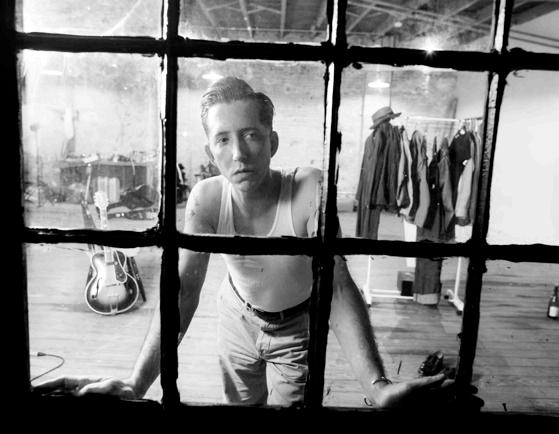
The majority of the Illinois-born, Missouri-raised singer’s work serves as a love letter to the Midwest. In the song “Central Time,” from his 2012 eponymous album, he even boasts that he’s “just a plain ole Midwestern boy.”

LaFarge has been touring almost as long as he’s had the nickname “Pokey,” a moniker bestowed by his mother. After

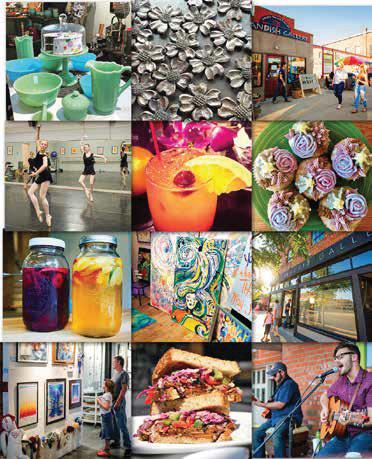



finishing high school in 2001, he hit the road, hitchhiking across the U.S. and busking to make a living. During these years, his sound evolved from playful street music into a classic vibe unparalleled by other artists today.

LaFarge has released six albums, the latest album, Manic Revelations, in 2017. His music transcends decades; although he has the old-school croon of a 1950s heartthrob, the tracks themselves more closely resemble tunes from the ’20s and ’30s. You won’t have much luck nailing down his genre either; LaFarge plays Western swing, jazz, rock and a lot of
LaFarge will be playing at The Blue Note at 8:30 p.m. on Nov. 3. Tickets are $17 in advance, $20 day of show.
blues. His aesthetic matches his music, too. He often sports high-waisted pants, suspenders and a tilted fedora.
LaFarge will make you feel like you just stepped out of a time machine. Expect old-timey harmonica and songs that make you want to sway.
15 CULTURE MUSIC VOX MAGAZINE • NOVEMBER 2018
Photography courtesy of Nate Burrell
WHAT YOU UNEXPECT www.northvillageartsdistrict.org The North Village Arts District is an art, music, food, drinks and fun lovers paradise packed into beautifully renovated warehouses, shops and historical buildings in downtown Columbia, Missouri. Broadway N. 10th St. ALLEYWAY Orr St. St. James St. E. Ash St. Park Avenue N. 10th St. E. ASH ST. HUBBELL DR. E. Walnut St. BROADWAY PARKING PARKING PARKING WABASH STATION FIRE STATION AMEREN LOT SHORT ST. GARAGE THE FIELDHOUSE THE BROADWAY BROOKSIDE NASH VEGAS AARDVARX IRON TIGER TATTOO GOOD NATURE BEST OF THE WEST MEDICI COURTYARD PARKING ENFORCEMENT HOURS Parking Garages 8a-6p M-F Parking Lots 8a-6p M-S Street Meters 9a-7p M-S Fretboard Coffee Missouri Contemporary Ballet Range-Free North Village Recording Studio Dogmaster Distillery Talking Horse Productions Cafe Berlin Rose Music Hall Yoga Sol PACE YOUTH THEATRE Shear Soul Hair Studio Coming Home Orr St. Farmers & Artisan Market Orr Street Studios Shannon Webster Studio Resident Arts Wildy’s World Artlandish Gallery Dancearts 9th St. Public House Carla Ciolli Hair Sager-Braudis Gallery EVERY SUNDAY Ophelia’s Flowers Dogwood Artist Workspace DrinKraft Le Bao
Nameless to famous
Before singer Tyler Childers brings his bluegrass-folk-country sound to CoMo, take a look at his path to stardom.
 BY CHARLIE CLARKE
BY CHARLIE CLARKE
Just a few years ago, Kentucky-based country crooner Tyler Childers played for a half-empty Rose Music Hall during a free happy hour show. Fast forward to 2018, and his November performance at The Blue Note sold out more than two months in advance. His growing success comes on the heels of his second studio album, Purgatory, which increased his following among country audiences with the help of experienced producers Sturgill Simpson and David Ferguson. Charles Bruce, the assistant general manager of The Blue Note and Rose Music Hall, has witnessed the singer’s journey and broke down how a series of local performances forecasted his rise to fame.
February 2016
Played a happy hour show at Rose Music Hall
Bruce had heard a couple of Childers’ tunes on Spotify and invited him to perform in Columbia. Happy hours at Rose Music Hall usually draw about 150 people, he says, but just 80 turned out for this one — the majority of whom had no idea Childers existed. “By the time the show was over, everyone in the place knew that they had just heard something that was going to be good,” Bruce says.
May 2016
Played a Kentucky Derby party at Rose Music Hall
Bruce says he remembers people coming in from St. Louis and Kansas City for the performance. He credits the show’s turnout — a crowd of 112 people — to a Columbia music scene that spreads word quickly about emerging artists.
July 2017
Released breakout album Purgatory Childers describes this album as “not about rock, or grass, or country … it’s just hollerin’

in the mountains and stirring shit up!” on his management’s website. Spurring a tour and a growing fan base among country music listeners, the album established Childers as a rising country star and garnered multiple accolades. It topped Billboard’s “Heatseekers” chart the week of Aug. 26, 2017, for up-and-coming artists and landed on “Best of 2017” lists for Rolling Stone, Vice’s Noisey and NPR Music.
November 2017 Sold out Rose Music Hall
By this point, Childers had developed a strong Columbia following, and with the help of the release of Purgatory, he filled up Rose with an audience of 275 people.
“Full circle is a good way to put it,” Bruce says in reference to Childers’ increased ticket sales in Columbia. “It was something we could build up to, but we just didn’t expect it to happen that quick.”
September 2018
Won Emerging Artist of the Year at the 2018 Americana Honors & Awards
In the midst of a nationwide tour, Childers won the prestigious award that The Avett Brothers and Mumford & Sons snagged when they were emerging onto the music scene.
November 2018 Sold out The Blue Note
His growth in popularity spiking, Childers tripled his concert audience by selling out The Blue Note, which holds 850 people, two months in advance. “How do you go from playing a free happy hour, no one knows who you are, to selling out The Blue Note a year or two later?” Bruce asks. “That’s a huge jump.”
Greg Kemna, who’s attending Childer’s show, says via Facebook that he’s a “huge fan.” The singer effectively blends folk music and bluegrass together to create soul and meaning, he says.
By late September, Childers had sold out nearly all of his 42 remaining U.S. shows in cities such as Boston, Chicago, Minneapolis, Nashville, Atlanta, San Francisco and Seattle.
16 CULTURE MUSIC VOX MAGAZINE • NOVEMBER 2018
Photography courtesy of David McClister
Tyler Childers found success after the release of Purgatory, his second studio album in 2017.
Book your plans
The best way to enjoy literature isn’t always by staying home.
BY TEDDY HANS
Why are Finland, Norway and Sweden a few of the most literate countries in the world? Some might say it’s their top-rated education systems. The real reason: It’s too cold to do anything but stay inside and read. OK, maybe not. But with the temperatures dipping this month, act like a Scandinavian and pick up a book. If you’re feeling social, consider one of Columbia’s many book events. Whether you want to hide away with your nose in a book or gather with fellow bibliophiles, these five November literary highlights are worth checking out.
Becoming by Michelle Obama

It’s official: Michelle Obama is a rock star — at least she’s selling out her arena tour like one. The former first lady’s foray into the writing world is coupled with a stadium book tour. The memoir details her early childhood on the south side of Chicago and transitions to stories of her eight years in the White House. She also discusses the challenges of raising her children while constantly in the public eye. Obama’s book tour begins on the same day the book’s release on Nov. 13, with her first stop in Chicago at the United Center.
Copies of Obama’s book are in high demand, including here in Columbia. Skylark Bookshop Owner Alex George says they’ve ordered “an absolute ton,” and they expect the book to be a huge hit.
Elevation by Stephen King

Two is better than one, right? His last book, The Outsider, out in May, and now the impos sibly prolific King is releasing another book in 2018, slated for Oct. 30 Elevation tells the story of Scott Carey, a man who contracts a mysterious af fliction that brings together a
splintered community. In today’s climate of divisiveness and polarity, King’s book comes at the prime time for an uplifting story and is a departure from his often macabre tone.
Learn from authors at local bookshops Skylark and Yellow Dog bookshops aren’t just for browsing; they also put on monthly events.
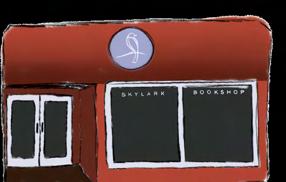
connected short stories that touch on the rapidly changing culture of rural America, specifically the Ozarks. Burrell is a poet who recently released a collection of poems titled Troubler
The event is put on by Joe Chevalier, the owner of Yellow Dog Bookshop, and Marc McKee, a former English professor at MU.
Tell your story at Daniel Boone Regional Library

November is National Novel Writing Month, and the library is encouraging aspiring authors. From 6–9 p.m. on Nov. 9 , the library will be hosting a “Come Write In” where novelists-in-progress can crank out some pages in a distraction-free environment. Pizza will be provided to fuel writers during the sustained quiet writing time.
Skylark will be hosting an author appearance for the book When Women Wrote Hollywood, which is presented in conjunction with the Citizen Jane Film Festival and the Unbound Book Festival. The book is a collection of essays from female screenwriters who worked during the Golden Age of Hollywood. The contributions of these screenwriters have been largely forgotten in the course of cinematic history. This event takes place at 1 p.m. on Nov. 3
“Everything is very interactive,” George says. “That makes it more fun for the writer and more fun for the audience.”
The self-proclaimed “mom and pop bookshop,” Yellow Dog hosts monthly book presentations and discussions as a part of its The Next Weather Reading Series, in which it hosts a pair of authors who discuss their work. This month’s event is at 7:30 p.m. on Nov. 6 and features authors Angela Mitchell and Elijah Burrell.

Mitchell is a St. Louis-based writer whose book Unnatural Habits and Other Stories is a collection of
“The challenge is to write an entire novel during the month of November,” says Lauren Williams, adult and community services manager at the library. “Some bigger names have actually done it as a way to get kick-started.” The library also hosts “Reading to Rover,” where children can read books to therapy dogs. The kids can practice reading to an audience that doesn’t care if they stumble over their words, Williams says. Become a puppy’s favorite storyteller from 5:30–7:30 p.m. on Nov. 12.
Jeannette Walls at Jesse Hall
Most commonly known for her acclaimed 2005 mem oir-turned-movie Castle, Walls will speak at Jesse Auditorium at on Nov. 1. She will discuss her turbulent childhood, her writing career and how she was able to succeed after her difficult upbringing.
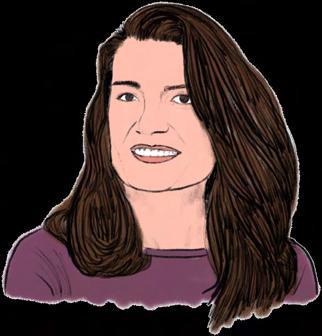
17
MAGAZINE • NOVEMBER 2018 CULTURE BOOKS
Illustrations by Sadie Collins VOX
Shea Gentzsch transfers liquid nitrogen, which is used to keep bull semen cool for artificial insemination, from a larger tank to a smaller barrel to be transported.

18 VOX MAGAZINE • NOVEMBER 2018
HOME IS WHERE THE B A RN IS
Whether she’s saving calves from frostbite, tending to her animals or artificially inseminating cows, it’s just another day for local cattle farmer Shea Gentzsch, who has seen it all during her time on the farm.
STORY BY CAMDEN JONES • PHOTOGRAPHY BY JASON VANCE

19 VOX MAGAZINE • NOVEMBER 2018
On a chilly Wednesday afternoon, Shea Gentzsch pulls her white Ford Ranger into the long gravel driveway of Mead Farms in Eldon and parks near a weathered cottage. A field of dormant grass extends beneath the gray sky, and a large metal barn stands near a patch of trees.
Inside the barn, Jennifer Russell, who manages the cattle at Mead, is already at work. She has requested Gentzsch perform artificial inseminations on about 30 to 40 cows. To prepare, Russell refers to a spreadsheet to match the codes on thin plastic straws of bull semen with the numbers on the cows’ ear tags.
When Gentzsch enters the barn, Russell updates her on the latest goings-on at the farm, her voice breaking through the chorus of cows mooing and birds chirping. Gentzsch smiles softly as she listens to the latest farm gossip and prepares for the artificial insemination, or A.I.
She takes a translucent pink plastic sleeve and slides it over her arm up to her armpit, then pours a glob of clear lubricant from a crusty plastic jug onto her covered hand.
Gentzsch leans over, avoiding eye contact. “This involves an arm up the ass.”
Not your average day job
Gentzsch is a beef cattle farmer and an independent representative of ABS Global, a company that collects, packages and sells cattle semen. She maintains supplies of this semen — transported in plastic straws the size of Pixy Stix and kept frozen by liquid nitrogen — to artificially inseminate farmers’ cows around mid-Missouri.
Artificial insemination is a more affordable way to access a variety of high-quality genes than buying bulls to do it naturally. It allows widespread access to specific, high-quality genes for breeding beef cattle: Farmers can simply look through an ABS Global catalog to find a bull they like. Once a farmer decides which bull’s semen they want, often choosing different bulls to achieve certain desired qualities, it’s Gentzsch’s job to distribute that semen and assist with the A.I.
She performs 500 to 800 inseminations each breeding season as a supplement to her work as a beef cattle farmer and her part-time job at the Quail Valley Veterinary Clinic in Jefferson City. She meets some of her clients through the clinic; others are local farmers she has known previously, and a number are referred to her through ABS Global.
Gentzsch begins her day feeding some of her cows in a field. “I don’t think a lot of people have a clue where their food comes from,” she says.
Doing the dirty work
Back in the Mead Farms barn, Russell moves the cows through a series of metal gates and fences that eventually corral them into a working chute — a metal apparatus with fences on two sides, an opening on the back end, where it connects with the other fences, and a clamp-like gate on the opposite side. A cow walks in one end and tries to walk out the other, but the farmer shuts the gate on the cow’s neck so that it can’t leave the chute. This allows the cattle to be examined, vaccinated or otherwise worked on. In this case, it means “an arm up the ass.”
As Russell maneuvers the cows into the chute — some are more cooperative than others — Gentzsch shuts the gate and begins working. Russell hands her what amounts to a long, thin metal turkey baster packed with a straw of semen. With one hand, Gentzsch inserts it into the cow’s vagina to directly deposit the semen into its uterus, thus allowing for a better chance of conception.

“Because you’re using such a small amount,” Gentzsch says, “you need to make sure you get it through.”
To ensure she has reached the uterus, she inserts her other arm into the cow’s rectum, which lets her feel for the cow’s
20 VOX MAGAZINE • NOVEMBER 2018
WHAT’S IN A NAME?
When it comes to cattle, names mean a whole lot. Here’s our bovine breakdown:
Cow: a female bovine (which is the scientific term, by the way)
Heifer: a young female cow that has not yet had children
Calf: a baby bovine
Bull: uncastrated male
Steer: castrated male


Cattle: a group of bovine, not gendered

cervix through the rectal wall.
“I’m sure from the outside looking in it’s like ‘Oh my God,’” Gentzsch says, “but we grew up slopping in mud and cow shit and everything else, so it was not a stretch for me.”
At times, though, it is a literal stretch. Some of the cows thrash about in the booth, driving their heads into the ground and lifting their flanks to make it difficult for Gentzsch to reach.
A cow that Russell calls crazy puts up a particularly strong fight. She shouts at the cow when the animal resists entering
the chute.
“Come on. It’s all good,” Gentzsch assures the cow, finally able to secure her.
“If it were me, a cow with that attitude…” Gentzsch tilts her head and motions her thumb backward over her shoulder. “It would not be worth it to me.”
All roads lead home
Gentzsch lives in an old, two-story cottage just south of Millersburg in Callaway County. The lower level is brick, and the upper is covered in white paneled siding. Weather and time have worn some of the
Gentzsch’s daily feeding ritual often begins before the sun rises, and it takes four to eight hours depending on the day. Because of their ability to survive off grazing, cattle are seen as living energy converters.

21 VOX MAGAZINE • NOVEMBER 2018
paint, and the siding curls up and away from the exterior like birch bark. On Wednesday morning, a red truck sits in front of her garage. Secured to its flat bed is a large tank of liquid nitrogen, which is used to cool straws containing bull semen.
Around 8:30 a.m., a relatively late start for her, Gentzsch leaves the house to begin her daily cattle feeding routine. She dresses in layers: a dark, longsleeve shirt under a tattered tan vest. She sports black, calf-high rubber boots, blue jeans and a gray handkerchief tied around her neck. Her left boot has a large hole in the outside edge, so she wears a plastic bag over her sock to stay dry. Her visor is pale pink, its original red faded from years of the beating sun. When she’s not covering the visor with a dark blue knit hat, strands of her wispy blonde hair poke over the visor strap and rest on the bill like feathers. Her glasses have the kind of lenses that darken in the sunlight.

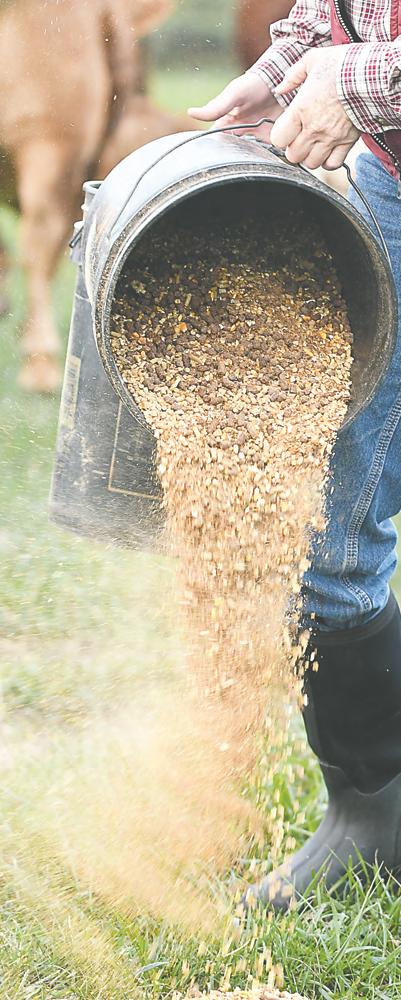
“I dress like a homeless person as you can see,” she says.
Gentzsch, 49, has been around cattle all her life. She grew up on the same farm she now runs with her 75-year-old father.
It has been in her family for generations. As an only child, she spent most of her time with her family and farm animals. She showed cattle competitively at county and state fairs, as well as a few national shows. Caring for the cattle taught her responsibility, she says, and the shows themselves helped market her family’s breeding cattle. Her favorite show cow was a Limousin breed named Ghost Dancing. The name was the same as what author William Least Heat-Moon called a van he traveled around rural America in for his book Blue Highways: A Journey Into America. She continued showing cattle until about six years ago, when she slowed down because her life was getting too busy.
Growing up, Gentzsch got involved with agricultural youth organizations
4-H and Future Farmers of America (now called the National FFA Organization). There, she met people her age who thought like she did and served as a national board member for the Junior Limousin Association. She started assisting a local farmer with artificial cattle insemination during her freshman year of high school because A.I. was the best
Gentzsch works with her father to run the farm that she grew up on. She’s always had a special connection to animals. “You can learn a lot about human behavior by watching animals,” Gentzsch says.
way to affordably improve the genetics of her family farm’s breeding stock.
She wanted to be a veterinarian, but she was too bad at math, she says. Instead, she went to school for journalism at MU and later worked for a cattle magazine in Oklahoma in the early ’90s. She says she moved back home in 1996 to help her father run the farm. She started at the Quail Valley Veterinary Clinic 20 years ago and began working with ABS Global roughly five years later — both extra streams of income that she took on to support what she calls her “cattle habit.”
“I’m an animal person, not a people person,” Gentzsch says. “It’s what I prefer to do as long as I can physically do it.”
22
VOX MAGAZINE • NOVEMBER 2018
Because she has a smaller operation, Gentzsch does not use A.I. on her own cattle.
Apart from the group
After collecting buckets of grain pellets from a metal silo and feeding three of her bulls, Gentzsch enters a gray barn through a large door. A flatbed trailer sits near the back, stacked high with rectangular hay bales that fill the air with their musty-sweet scent. A pen in the northeast corner of the barn houses two young Herefords, another breed, and a larger pen to the south holds one older male Limousin.
Gentzsch feeds a cow in a room off to the side, then the two cattle in the northeast pen. “This is Scruffy,” she says of the Limousin. Scruffy perks up, tossing his head and squaring his stance.
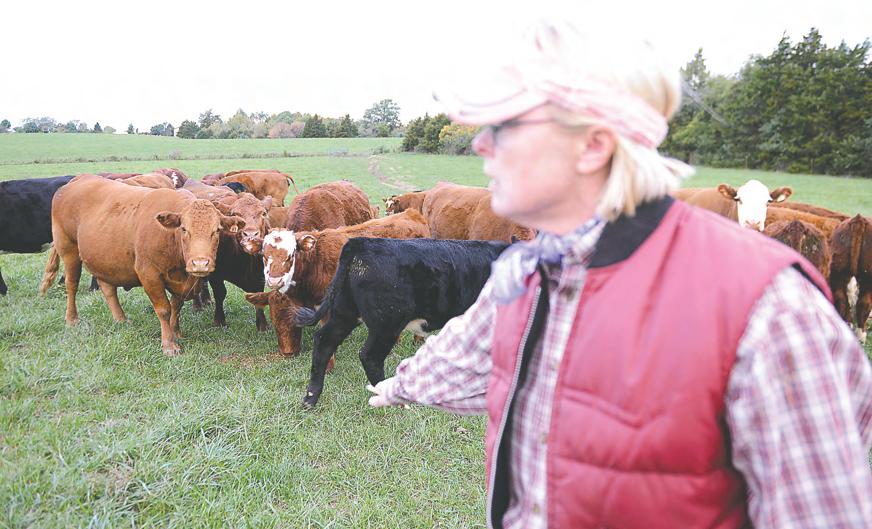

“Scruffy got his eye injured, as you can see,” Gentzsch says. Scruffy’s right eye is completely blind, its dark brown color clouded-over with a dull, gray-blue haze. When open, it extends farther out of its socket than the other eye, making more of its curvature visible. His left eye is partially clouded, too: a small spot near the center, a scar from an early pink-eye infection. It gives him the blank stare of a plush toy.
“Don’t tell Scruffy,” Gentzsch says as the bull stamps nervously, “but he’s going to wind up on somebody’s plate someday.”
Gentzsch explains that Scruffy’s injury meant he couldn’t be sold with the rest of his calving group when they turned eight months old. She says superficial abnormalities, even non-genetic ones like Scruffy’s blind eye, give buyers an excuse to pay less than the normal price.
“If you go to sell your used car, and it has a dent in the door,” Gentzsch explains, “(it) doesn’t affect the way it drives … but they’re gonna say, ‘Well, it’s got a dent in the door, so it’s worth $500 less.’”
To avoid the chance that these irregularities decrease buyers’ interest in the rest of the calves in the group, farmers keep them until they’re fully grown, then sell them individually at a reduced price.
This also happens to be one of the reasons farmers use A.I. — because a group of consistent quality sells for more than a random or flawed group.
“I need to find him a friend,” Gentzsch says. “He doesn’t really like me anymore.” That’s not for a lack of trying. Gentzsch is kind to her cattle, and she says most other beef cattle farmers are. She calls them “sweetheart” and “pumpkin” and “sweetie” and “kiddo.” She says raising good beef requires taking good care of the cattle.
“You have to like them, or you would not do this,” Gentzsch says. “There’s always gonna be a few bad apples … there’s people that don’t treat their children or their spouses the way they should, either.”
Gathering the goods
When farmers look to breed new cat-
23 VOX MAGAZINE • NOVEMBER 2018
I AM AN ANIMAL PERSON, NOT A PEOPLE PERSON. — SHEA GENTZSCH
tle, Gentzsch says they look for large, long-bodied bulls like hers. The length of a bull along with the body’s depth, the measure from top to bottom, assures that its offspring will provide more good meat.
“They need a lot of ‘guts’ — a lot of internal capacity — so he can eat grass and take care of himself,” Gentzsch says. She also says they need sound feet and legs because they won’t be useful if they develop problems walking. All of this is theoretically accessible through the semen from ABS Global’s bulls.
The semen from these bulls costs anywhere from $20 to $100 per straw, says Daniel Hodgkin, ABS Global’s North American production and operations manager. Hodgkin says many of the bulls themselves would cost about $750,000 to $800,000 to purchase, and others are so expensive they would never be available for purchase by the general public.
Hodgkin oversees the production, collection and processing of the bulls’ semen. He started working in collection in one of ABS Global’s barns in Australia. He explains the process in straight-forward terms.
“Essentially, we have an artificial vagina,” Hodgkin explains. “The animal will be stimulated on another animal that’s there, and he will mount on that animal. And after a few ‘jumps’ … that will allow the bull to pass off some seminal fluid prior to ejaculating into the artificial vagina.”
In order to ensure the bull is able to be properly stimulated, Hodgkin says ABS Global uses castrated male steers for mounting because they’re more docile and won’t move.
“It stimulates the animal to jump on,” Hodgkin said. “Bulls will mount each other if you put them in a group housing environment. They’ll jump on anything. … Even bulls that do go out and do natural service, they’ll come back and they work just fine. It’s not as if, just because they know what the real thing is, they’re not gonna mount and collect semen.”
Once the bull is stimulated on the steer, an ABS Global worker approaches the bull, artificial vagina in hand, and collects the semen. After collection, the
THE COST OF CATTLE
As cattle farmers such as Shea Gentzsch would attest to, it takes a lot of work to put beef on the table. It involves land, grain and water to raise cattle, and for everything that goes into the process, there’s an environmental cost. We break down some of the realities of beef cattle farming in the U.S. with data from the Missouri Department of Agriculture, the Environmental Working Group and the Proceedings of the National Academy of Sciences.
There are 2.16 million beef cattle in Missouri.
Red meat such as beef and lamb is responsible for 10 to 40 times as many greenhouse gas emissions as common vegetables and grains.
167 million pounds of pesticides are used each year to grow livestock feed.
149 million acres of cropland are required to grow livestock feed.
20 percent of methane emissions are generated by cattle.
semen is labeled with the bull’s identification number, taken to the lab and tested to make sure it meets ABS Global’s standards. These include progressive motility, which Hodgkin describes as the percentage of sperm cells “that are swimming in the right direction.”
Once the semen passes this and other quality tests, it’s shipped to ABS Global representatives like Gentzsch for distribution. The semen she distributes comes primarily from an ABS Global facility in DeForest, Wisconsin. It’s shipped more than 500 miles to her, where it ends up in a liquid nitrogen-cooled canister sitting near her front door.
Here today, dinner tomorrow
At a barn behind her aunt’s home, a small house with little stained glass windows, Gentzsch feeds a few more “misfit” cattle that don’t match the rest of their herd. Gentzsch describes one Limousin as “fucked-up colored” — a dark blackish-brown mottled with blotches of tan — which means she’ll be docked in price just like Scruffy.
As she heads to her final feeding stop of the day, a red and white barn adjacent to the pasture, Gentzsch tells the story of a calf born on New Year’s Day.
“It was colder than shit,” she says. “She had it over here in the woods. It was so frickin’ cold; I thought I should bring her in.”
She pulls up a picture on her phone of a newborn calf curled up in the passenger seat of her truck. Gentzsch drove the truck around for a few hours to try to warm up the calf, but despite her best efforts, the calf lost the tips of its ears to frostbite, and they now end in jagged edges.

24 VOX MAGAZINE • NOVEMBER 2018
YOU HAVE TO LIKE THEM, OR YOU WOULD NOT DO THIS.
– SHEA GENTZSCH
Gentzsch says it could have been worse: the calf could have lost its feet, meaning she would have needed to euthanize it just hours after birth.
Today, the funny-eared calf and its mother wait for her in a pen with another cow-calf pair. They moo as she approaches. “Hi, little man,” Gentzsch says to the other calf. “He says ‘I didn’t lose anything. My mom just doesn’t feed me like she should.’” She pours his feed, and the calf jumps around the pen excitedly.
“Oh, quit showin’ off,” she tells him. Gentzsch moves to leave the barn.
“I’m a sucker,” she says. “They’re cute.
I know that’s really stupid…”
An obvious question hangs in the air, and Gentzsch says the words aloud.
“How do I reconcile the cuteness with the fact that they’re gonna get their head cut off?” she says.“You just have to make sure they have a damn good life under your care … I mean, this is kind of their purpose — to feed people. I feed them
“In my opinion, the gap has grown between the agricultural world and the rest of the general public,” Gentsch says. She’s noticed that fewer people in her area have contact with farmers these days.
so they can feed somebody else.”
Because of farmers like Gentzsch, who walk through a sludge of mud and excrement while putting their hands in places most people wouldn’t even look at, their neighbors are able to drive to a grocery store and add a delicately packaged cut of beef to their shopping cart without a second thought of how it got there.
“It’s kind of a noble endeavor, if you will,” she says.
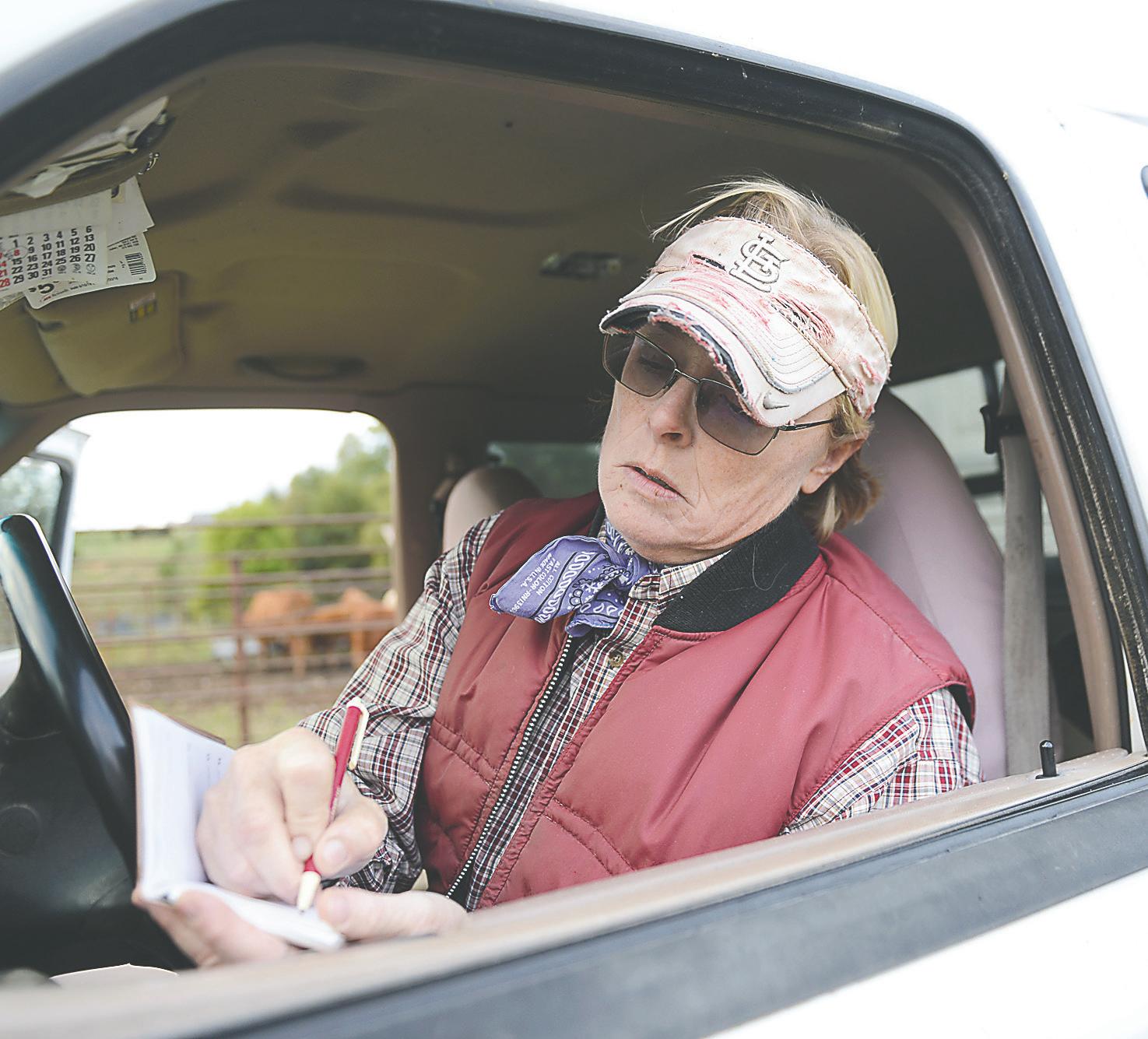
25 VOX MAGAZINE • NOVEMBER 2018
SO THIS IS DEMOCRACY


Freedom is a foundational American value. But is this ideal the same up close as it is from afar? Five people from different countries detail their views of our nation’s political system.
BY ELIZABETH ELKIN
Veli Thipe, South Africa

3 years in the U.S. Veli Thipe grew up watching American sitcoms. He says many people around the world think the U.S. is a perfect democracy. “There’s that yearning to actually come to the U.S. because of flexibility and opportunities,” Thipe says. “It’s the land of the free and the brave. They claim to say that, but my perspective when I got here changed drastically. I was shocked.”
Robert Burlinski, Poland

20 years in the U.S.

When Robert Burlinski first came to the U.S., he left everything he had in Poland. His mother didn’t have a green card, so the then-28-yearold worked several jobs to keep them afloat. “I never even thought about it as hard or difficult,” Burlinski says. “Family was all that mattered.”
It was the simple things, he says, that made the U.S. sound so good.
Burlinski, now 48, and his family run the downtown restaurant Café Poland. He says seeing democracy up close is different from seeing it at a distance, one basis of understanding being the American movies he used to watch. However, he says he believes there’s still a level of freedom in the U.S. quite different from communist countries (Poland was communist when Burlinski lived there but is no longer.) “Here, no matter what, people can say what they think.”

The 28-year-old came here to pursue his doctorate in chemistry in 2015 — around the time Black Lives Matter became prominent on MU’s campus. This shattered his notion that things in the U.S. run smoothly. Although he says he still believes there are opportunities and possibilities in the U.S., he says, “There’s no freedom here.”
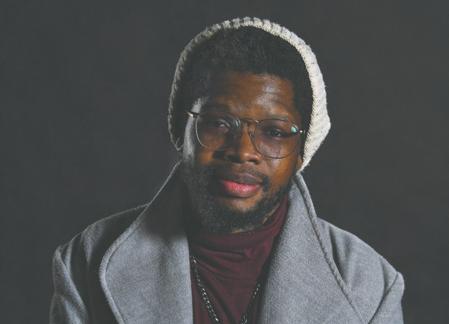
Jingwen Li, China

10 months in U.S.
Jingwen Li didn’t have much of an idea of what democracy looked like in the U.S. before moving here. Growing up, she was used to heavy government control of issues affecting its citizens. She came to the U.S. for her dual-degree program.
Not only did she see fairness in the classrooms, but says she felt it embedded within campus culture, too. “If I ever have a request or something, there’s going to be someone to listen to me,” she says. “I feel like my opinion actually counts, so that felt good.” However, she says there are still benefits to having greater government control of decisions. Not everyone is well-educated, and she believes this can create disastrous situations and slow down progress.
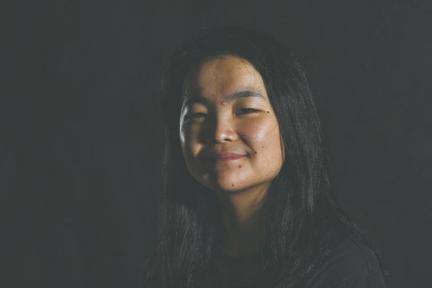
26 VOX MAGAZINE • NOVEMBER 2018
Photography by Photographer Name
Vox sent a team of state government writers to explore the ways our democratic process works — or doesn’t.
Photography by Derek Rieke
Yanu Prasetyo, Indonesia

2 years in U.S.

Amid the 2016 presidential race, Yanu Prasetyo came to the U.S. for a scholarship opportunity. He was surprised by what he saw in American politics. When President Donald Trump took office and began making policies, his disappointment grew. Because Prasetyo and his family are Muslim, Trump’s travel ban from most majority-Muslim countries made him both sad and frightened. He says he’s interested in studying successful entrepreneurs. “Not to follow their way,” he says, “but to know more about the ‘American dream’ and its impact on the rest of the world — both negatively or positively.” He says for citizens, the American dream might no longer exist.

Huda Noori, Iraq

4 years in U.S.
Until Huda Noori was about 16, the U.S. was portrayed as the enemy in Iraq. Although she knew that democracy existed before she came to the U.S., she wasn’t at all curious about it.
In early 2014, Noori’s husband received a scholarship to study for his master’s degree, which brought the couple to the U.S. Still, she was nervous to come. As a Muslim woman, she was worried she wouldn’t be able to find a mosque. When Noori found one, she was surprised. “There is a lot of diversity here,” she says. “There is a lot of Muslim community here, so I never feel that I’m strange.”
Editor’s note: Noori declined to be photographed.
HOW A BILL DOESN’T BECOME A LAW
 BY THOMAS OIDE
BY THOMAS OIDE
Making laws is supposed to be as easy as the “I’m Just a Bill” song from Schoolhouse Rock says it is, right? Well, not quite. During the 2018 legislative session, 1,547 bills were introduced in the Missouri legislature. Only 150 of those bills were signed into law. Follow the path a bill takes to see what it’s up against.



Anyone with an idea, including lobbyists and concerned citizens, can propose a bill and talk to a representative who can introduce it.
In 2018, members of the legislature introduced 1,547 bills, 996 in the House, 591 in the Senate.

The sponsor introduces the bill on either the House or Senate floor, where it’s read for the first time.
“If your sponsor is less than fully committed to the passage, the bill almost certainly won’t pass,” says former state Rep. for Columbia Chris Kelly.
The bill is read again and referred to the proper committee, where opinions for or against the bill are heard.

Only 351 House bills and 144 Senate bills made it past committee in 2018.

In the House, the speaker puts the bill on a long list so that it can be debated and amended. The majority leader then schedules the bill for floor debate.
Every bill that could be brought to the floor gets put on the list, but most sit there forever. Kelly says bills may be called up for debate late or may never be debated.

X X X
XIf the bill is in the Senate, senators can filibuster, meaning uninterrupted speaking, to prevent discussion on a bill they don’t like.



If passed, the bill goes through the same process in the other chamber, including the committee and calendar steps, with the same potential roadblocks.
If the House and the Senate pass two different versions, it goes to a conference committee, a meeting of five people from each body, who work out the differences.


X“If one person in the conference doesn’t like your bill, there’s a good chance it dies in the conference,” Kelly says.
If the conference committee comes to an agreement, a report is sent to both chambers of the legislature for a vote.
If both chambers accept the report, the bills goes to the governor’s office to be signed.
The governor can choose to veto the bill, which prevents it from becoming law. The governor’s vetoes can be overridden by a two-thirds vote in the House and Senate.
In 2018, less than 10 percent of the total legislation introduced became laws.





27 VOX MAGAZINE • NOVEMBER 2018
Illustrations by Molly Nagel/courtesy of Wikimedia
“I was homeless for a few months ... It was very sad to see there are people with less privilege that are never going to get the help that I have gotten, so I have made my life mission to change that ... Voting was the first baby step that I took. Then I started to go to things like marches and rallies ... I have engaged in these things because that’s the only power that we have to make a difference.”
“I’ve always looked at it this way: There’s people who have the leisure of not having to worry about a political system, and there’s people that — even if they wanted to — they just couldn’t because their lives are politicized every moment.”
“When I see the older voters come in that have been voting for eons, and they come in to vote, and they can’t hardly walk to get in there ... that just makes all the difference: when you see people that are eager to vote, and nobody’s going to stop them from coming in.”
BY PENG CHEN AND CAMDEN JONES
Voting is a constitutional right, but that’s not the only reason it’s important to those who do it. Boone County poll workers and political and student organization leaders explain why they care and why they respect the right to vote.

“My mom has a felony, and so she can’t vote … It’s very easy to just not go out to vote, but I think about how upset my mom was with how she couldn’t vote in this prior election. And then for me not to take advantage of my right to be able to do that ... I don’t know. I don’t think I’d be able to do it.”
“I have always thought that it’s the only route that we have as citizens to make a change in our society ... If somebody’s in office doing things you don’t like, don’t just say ‘oh, that is just the government.’ No. Go out, cast a vote and put somebody in that’s going to be more in line with what your values are. ”
“If you have an opinion, and you want to express it, you can, you know, go on the internet and tell everyone, ‘Hey, this is what I think.’ But that doesn’t mean anything’s going to change.”

Delaney Catlettstout, president of Boone County Young Democrats
“I know politics affects every part of my life. I think it’s really important that you hold your elected official accountable to the people that they represent. As young people, we kind of forget to do that and we forget we’re essentially their bosses in a way. We elect them to represent us, so I think it’s really important to try to empower young people to go and take a stand and have a voice.”


VOX MAGAZINE • NOVEMBER 2018 28
Collin Smith, Battle High School senior and Boone County poll worker
Vanessa Ramirez, MU sophomore studying political science and Association of Latin American Students member
Gina Newby, Boone County poll worker
Jordan Look, MU junior studying psychology and Black Studies, Legion of Black Collegians political chair
Kory Davis, chair of executive committee for Our Revolution Mid-Missouri
Kim Krieckhaus, retiree, Boone County poll worker
BY LAURA MURGATROYD AND DAVID REYNOLDS


It can be easy to get frustrated with the political system. With so many different viewpoints, it is also easy for voices to get lost. For some people, voting struggles can lead to not voting at all. There are many reasons why people choose not to vote or engage themselves politically throughout elections. These community members decide to sit it out and empathize with those who do.
Jacquie Xiong, MU graduate electrical engineering student
“If I’ve never really heard about [the candidate] or their platform, I feel misinformed. Politics in general I just feel is very messy, and sometimes it’s like you’re choosing the worst of the two when you’re voting. In the past, when I haven’t voted, it’s been because of that, like a lose-lose situation almost with the candidates.”
Dan Irwin, maintenance worker at mobile home community
“Anything that’s on a national level, I just don’t see it being something that we really have control over anymore because there’s too many special interests, and even if you don’t wan to call it like an Illuminati or whatever, there’s too many corporate money interests that are always there.”
“[Chinese people] are never told to vote for anything, at least when I was in China, because we have selected representatives for us to vote, like for the president and all that, so normally we just don’t really vote.”
“No matter how flawed the system, a person always has a voice, but how effective that voice is, is another matter. We always have a voice to voice our voice. It’s just a matter of how stacked the deck is against us, and if it’s too stacked, well, it can really suck.”
BY THE NUMBERS
Missouri saw a turnout of 67 percent in the 2016 election. The question remains: Will eligible voters who stay at home change their minds and vote?
40 percent of the voters from the 2016 State of the YAYA (Youth and Young Adult) survey say they believe that their votes don’t count, which is a decrease of 10 percent from 2014.
Boone County had a voter turnout of 64 percent compared to the statewide turnout of 67 percent for the 2016 general election.


Votes cast
83,868
131,020
Total registered voters


The State of the YAYA survey reveals varying interest in politics throughout the years: 56%

29 VOX MAGAZINE • NOVEMBER 2018
David Shlicher, overnight stocker at Walmart
38% 52% 62% 2018 2017 2016 2014
50% 40%
Tarina Hargrays, MU senior communications student
LAWS AND DISORDER

In the effort to get measures passed, lawmakers sometimes add the nonsensical.
BY HAOYI JIANG AND TAMMY KO

When House Bill 1460 was introduced, it would have only affected future Olympians. However, by the time it made its way through the legislature, it had the power to make nearly 6 million Missourians pay more for gas. How does that happen?
When the Missouri General Assembly meets, lawmakers have about four months to create new laws or change existing ones. If a lawmaker is interested in making a change and time is running out, they often tack it on as an amendment to another bill that has a better chance of passing. And sometimes, there isn’t much of a connection to the original bill.
Olympic medals connects with fuel tax
The November ballot includes Proposition D, which most people think of as a choice about a fuel tax increase. But it also includes a short sentence about a tax exemption for medal winners in the Olympics, Special Olympics and Paralympics. The combination doesn’t seem to make sense.
Only 30 Missourians have won Olympic medals since 1968, including MU wrestler J’den Cox, who took home a bronze medal at the 2016 Summer Olympics in Rio de Janeiro. State Rep. Jean Evans, R-Manchester, proposed a bill that would, in the future, require Olympians not be taxed on their winnings. Meanwhile, lawmakers had been arguing all session about whether to propose a fuel tax increase. As time was running out, they decided to add the potential tax hike to a bill that was already moving through the system. They picked Evans’ Olympic bill.

“WHY CAN’T I WIN?”
For these advocates, no amount of time is too much when it comes to bringing their bills into law.
BY TESSA WEINBERG AND YUHUA REN
Rep. Keith Frederick is no stranger to perseverance. He’s sat in a capitol hearing room full of medical school students, and as he’s pushed for increased mental health services, he’s cried reading a letter from a mother whose son died by suicide. It’s taken years of dedication and drive for Frederick, an orthopedic surgeon and Republican state lawmaker since 2010, to see a bill like this become a law.
Child marriage
Prior to Evans introducing Senate Bill 655, Missouri did not have a minimum marriage age. Her proposal passed the House but stalled in the Senate. Meanwhile, a bill focused on prosecuting people for child abuse made it through the Senate and to the House. Evans, looking for a way to enforce a minimum marriage age, needed to find a bill dealing with the same general subject because of the state Constitution’s single-subject rule. Evans added her proposal to the Senate bill on child abuse. It worked. On the last day of the session, the Senate bill, with Evans’ addition, was approved.
Thirteen subjects, one bill
Sometimes, lawmakers go too far. In July, Gov. Mike Parson vetoed legislation because it contained too many topics unrelated to the original goal. The first version, sponsored by Rep. Kevin Austin, R-Springfield, covered issues related to drug treatment courts. However, the final version included 13 different subjects such as nuisance properties, Kansas City police officers and minor traffic violations. When he vetoed the proposed piece of legislation, Parson said that treatment courts serve a valuable purpose for both judicial and corrections systems. A new bill, focused only on treatment courts, passed in September during a special session.
The wheels of government turn slowly, with lobbyists, activists and legislators fighting each day to drive bills through the legislative session. As one of the only physicians in the House during his first few years as a state representative, Frederick made mental health a priority, and he took victories where he could get them.
“Mental health issues are often ... stigmatized, and sometimes folks just don’t want to talk about it,” Frederick says. “And if I hadn’t been there, I think there would have been a lack of a voice for the medical perspective for these things. You can use the system to affect good change, but that’s not to say that the system doesn’t need some improvement.” Steven Chaffin, an MU student and former executive director of the student lobbying group the Associated Students of the University of Missouri, known as ASUM, knows this, and has experienced the difficulties that come with working within the system.
In the fall of 2015, one of Chaffin’s close friends began dealing with mental health issues of her own. She booked an appointment with the MU Counseling Center, but trips to the emergency room escalated into a temporary leave from
30 VOX MAGAZINE • NOVEMBER 2018
Illustrations by Sadie Collins
Feb. 14, 2017
Early 2017
April 20, 2017
May 9, 2017
May 18, 2018
Fall 2020
Missouri’s
school before she could be seen. “It was a really derailing experience,” Chaffin says. “We would be staying up all night, and I’d be trying to help her work through this. But we really had no idea — either of us — how to deal with that.” Chaffin began to wonder: Was this a regular occurrence for college students? Research and conversations with mental health experts led Chaffin to see that it was. According to Partners in Prevention, a higher education substance abuse consortium, in 2018, 52 percent of Missouri college students reported experiencing anxiety and 20 percent reported having suicidal thoughts.
Zachary Lahr, the President of Mizzou Student Suicide Prevention Coalition, says that having services where students can start identifying the root of their mental health issues is essential to addressing them.

“Counseling services are crucial because they are tailored to the individual in question based on what they are experiencing,” Lahr says.
Although MU students have access to counseling services, many have shared stories of long wait times that can span months.
As Chaffin examined best practices, a recommendation stuck out to him: schools should have one full-time counselor for every 1,000 to 1,500 students. Chaffin scrutinized both MU and other state universities’ numbers and realized many weren’t close to meeting that goal.
Chaffin and ASUM students ap-

May
proached lawmakers in early 2017 seeking their help, but their response was unexpectedly blunt.
“We don’t have two pennies to rub together, and you want us to give $2 million so that we can update our mental health services?” Natalie Butler, the current executive director of ASUM, recalls lawmakers asking at the time.
They switched course, drafting a bill that would create a board meant to set mental health standards for universities to follow and to enforce consequences when necessary. Their top choice to sponsor it was Frederick, chairman of the House Health and Mental Health Policy Committee.
The bill began to move forward as the legislative session trudged on that spring, but it never saw the House floor.
Chaffin wondered how to grease the wheels. To get the bill through faster, they tacked it on as an amendment to a bill sponsored by Sen. Gary Romine. But the bill stalled during conference committee, where lawmakers from the House and Senate meet to work out differences in legislation.
Rep. Donna Lichtenegger, who served on the conference committee, chairs the House Committee on Higher Education and frequently worked with ASUM, knows the toll mental health can take, as her daughter’s friend struggled with self-harm.
ASUM failed to get their legislation onto a successful bill. They regrouped that summer, knowing in the 2018 session
July 9, 2018
they had to spend more time in the Senate, make connections with lawmakers earlier and be persistent. Their work the previous year had laid the foundation of educating lawmakers on why this was a worthwhile issue — so they took a similar route this year. Frederick sponsored the same bill, and when progress stalled, they added it as an amendment to Sen. Jay Wasson’s higher education bill.
It paid off. In the summer of 2018, Chaffin listened to live audio of the legislature’s proceedings to hear the moment it was approved and sent to the governor’s desk. “Just to sit there and you hear it happen — it’s done,” Chaffin says. “There’s really nothing like it.”
The final amendment that was passed lost some of the teeth of the original bill, as many do through revisions and compromise. Starting in the fall of 2020, Missouri’s public universities are required to publish their progress in meeting the International Association of Counseling Services Inc.’s standards for counseling services. While no consequences will be enforced, to ASUM and Frederick, it is a step toward transparency.
And for ASUM, it was the first time in recent years that a bill they lobbied for had passed the finish line. Butler says their work carries on. They’d like to continue pursuing funding for mental health in the future. For Chaffin, the lasting impact that students made for students was a driving force in why he kept trying. “We’re not guns for hire,” he says, “we’re
IN THE LOOP ESSAY 31 VOX MAGAZINE • NOVEMBER 2018 Photography courtesy of Mizzou News and Missouri House of Representatives
Steven Chaffin served as executive director of ASUM for two years.
lobbying for ourselves.”
Rep. Keith Frederick is also an orthopedic surgeon in Rolla.
House Bill 920 is read and introduced to the House for the first time.
HB920 is voted out of the committee but never sees the House floor for debate.
Rep. Keith Frederick drafts and sponsors a bill pushing for an increase in mental health services.
HB920 is added as an amendment to a bill sponsored by Sen. Gary Romine. The bill stalled during conference committee.
10, 2018
It is tacked on as an amendment to Sen. Jay Wasson’s education bill.
Senate Bill 807 — Wasson’s education bill — passes 108-30 with bipartisan support in the Senate.
Gov. Mike Parson signs the bill into law.
public universities are required to publish their progress in meeting the IACS’s standards for counseling services.











Back to the roots

Mash and roast your way through fall and winter with nutritious and delicious squash.
 BY RACHEL MCKEE TAYLOR
BY RACHEL MCKEE TAYLOR
Delicata, red kuri, acorn, spaghetti, kabocha — the yellow, orange, red and green winter squash stretch across Jim Thies’ stand at the Columbia Farmers Market. “Some of the customers started calling us the squash people,” says Thies, the primary operator and manager of Veggie Patch. There are many reasons to eat the vegetable, which is jampacked with fiber and Vitamins A and C, but the best part is that it’s tasty, sweet and low in calories — an easy replacement for potatoes.
Boasting a growth cycle of 100 days or more, squash are a long-season crop. Farmers such as Thies and John Corn of Mighty Acorn Farm planted in May this year to have time to harvest for the fall. Butternut squash is good for roasting and soups with a sweet, nutty flavor. Delicata, pale yellow with green vertical stripes, tastes like a mix of a sweet potato and a butternut squash. Pumpkin-shaped kabocha is drier and denser, so it is best for roasting.
Farmer Leroy Boley of Boley’s Farm noticed a recent increase in popularity of spaghetti squash and has responded to the demand by producing more.
Treat its stringy interior as you would its namesake. Toss the cooked insides with optional tomato sauce, and you have a low-carb meal.

33 VOX MAGAZINE • NOVEMBER 2018
TORTILLAS — A FAMILY AFFAIR P. 35 SWEET POTATO BEER? YES, REALLY P. 34
Photography by Derek Rieke
Delicata squash at Jim Thies’ Veggie Patch stand at the Columbia Farmers Market
Cheers to fall beers
Sip and swig these seasonal Missouri brews.
BY SHANNON HENDERSON
Fall is here, and as the leaves change, so do the local beer taps. Explore the autumn parade of ambers and browns with these limited-release drinks.
Broadway Brewery
At downtown’s home for hyper-local fare, the brewers and chefs alike make an effort to source their ingredients from nearby farms, such as Terra Bella. The Camacho Coffee Stout, a brand-new dark beer, was released Oct. 25. The coffee-forward flavor edges on cocoa and roasted malts. To design this beer, the brewery collaborated with local coffee roasters Camacho Coffee, which donates part of its profits to a number of local charities. Craving apples this fall? Follow up the coffee stout with the Blue Heron Organic Apple Cider.
816 E. Broadway, 443-5054, Sunday, 9:30 a.m. to midnight; Monday, 4 p.m. to 1:30 a.m.; Tues.–Sat., 11 a.m.–1:30 a.m.
Logboat Brewing Co.
There’s always a bevy of seasonal beers ready on tap at Logboat. It might be a little too cold to chill on the lawn, but cozy up to the taproom bar, or head to any local pub or grocery store in town for this brewery’s creative concoctions. Logboat loaded its Cowboy Me Black Lager with roasted flavors. The rough rider in you will look to the stars as you sip this brew with layers of smoke, chocolate and malt. It might not be offered at your local saloon, but you can definitely find it at Logboat through December. Also try special release Mr. Moot, which mixes fruit and toffee notes for a unique tasting IBA. 504 Fay St., 397-6786,Tues.–Thurs., 3–10 p.m.; Friday, 3 p.m. to midnight; Saturday, noon to midnight; Sunday, 1–6 p.m.
Bur Oak Brewing Company
Bur Oak is a favorite for many mid-Missouri natives and transplants alike. Scan the aisles of your grocery store, or head out to the taproom for a glass, growler or mix-and-match pack of your favorite specialties. Named for Bur Oak’s grain-guarding cat, Clyde’s Caramel Cream Ale
is a seasonal favorite. As Clyde keeps the brewery’s grain room free of pests, the brewers keep busy creating this creamy blend with vanilla and caramel notes. Or, embrace your hometown and grab a Boone County Brown. 8250 Trade Center Drive, 814-2178, Wed.–Thurs., 3:30–10 p.m.; Friday, 3:30 p.m. to midnight; Saturday, noon to midnight; Sunday, noon–6 p.m.

Piney River Brewing Company
This small-town brewery, buried deep in the Ozarks, transforms water and grain into intoxicatingly delicious ales, lagers and porters. Instead of driving to Big Piney River, grab a pint at Columbia pubs or a six-pack at Lucky’s Market. The Sweet Potato Ale, inspired by the brewers’ favorite post-harvest comfort food, is loaded with malt and spice. The sweet potato taste cuts through notes of vanilla and a warm spice aroma, making for a smooth finish. If sweet potatoes don’t suit your fancy, order the Black Walnut Wheat.
Breweries around Missouri welcome autumn with seasonal beers. Try Bur Oak’s Clyde’s Caramel Cream Ale, or take a drive to Rolla for Public House Brewing Company’s Giddy Goat Coffee Milk Stout.

15194 Walnut Grove, Bucyrus, 417-967-4001, Friday, 4–9 p.m.; Saturday, 2–7 p.m.; Sunday, noon–5 p.m.
Public House Brewing Company
Just a few blocks down from the Missouri University of Science and Technology, Public House is Rolla’s homegrown celebrity when it comes to beer. Public House brews are available all over Columbia in places such as Craft Beer Cellar and Hy-Vee. Public House teamed up with Rolla-favorite Giddy Goat Coffee House to create a rich stout packed with flavor, aptly named the Giddy Goat Coffee Milk Stout. You can taste a wide range of malts, a touch of bitter-balancing hops and a healthy dose of Papua New Guinea coffee beans in this dark beer. If heading all the way down to Rolla, also sip on some of Public House’s Taproom Samplers.
600 N. Rolla St., Rolla, 426-2337, Mon.– Thurs., 4–11 p.m.; Friday, 2 p.m. to midnight; Saturday., noon to midnight
34 EAT + DRINK IN SEASON VOX MAGAZINE • NOVEMBER 2018
Photography by Shannon Henderson and courtesy of Ben Nickelson
Flour power
Carmen and José Morales turned a family tradition in Mexico into a bustling tortilla business in mid-Missouri.

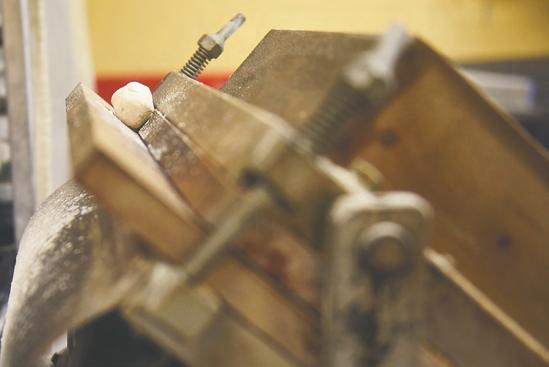 BY NOAH HIGGINS-DUNN
BY NOAH HIGGINS-DUNN
Two hefty, steel tortilla ovens sit in the middle of the kitchen at Carmen and José Morales’ restaurant. When José starts one of the machines, it groans to life. The blades cut the flat, round dough, which the conveyor belt then marches through an oven. On the other end, the golden, flaky tortillas are placed on a rack to cool before they’re sorted into bags.
The husband and wife duo own Tortilleria El Patrón, a Mexican restaurant and small market off Vandiver Drive in north Columbia. They begin most days at 6 a.m. when they assemble their tortillas, which are then sold at El Patrón and to other businesses. By the end of the day, they will have made more than 10,500 tortillas — 18,000 if it’s a busy weekend.
Carmen’s grandmother and mother-in-law made tortillas, and they passed down the craft to her and José. When the Moraleses started El Patrón in May 2017, they only served flour tortillas. As they grew in popularity, so did the demand for corn tortillas. But the Moraleses

35 VOX MAGAZINE • NOVEMBER 2018 EAT + DRINK RESTAURANTS
Photography by Jason Vance
Tortilleria El Patrón 711H Vandiver Drive, Tues.–Sun., 9 a.m. to 6 p.m.
José Morales (above) checks the oven before beginning his morning cooking at El Patrón. Tortilla dough (right) gets flattened before being fed through the oven on a conveyor belt (left).
didn’t know the recipe because their family didn’t ever cook them.
So, they ventured back to Mexico to purchase a machine, and while they were there, they took a two-hour crash course on how to make corn tortillas. “We came back professionals,” Carmen jokes.
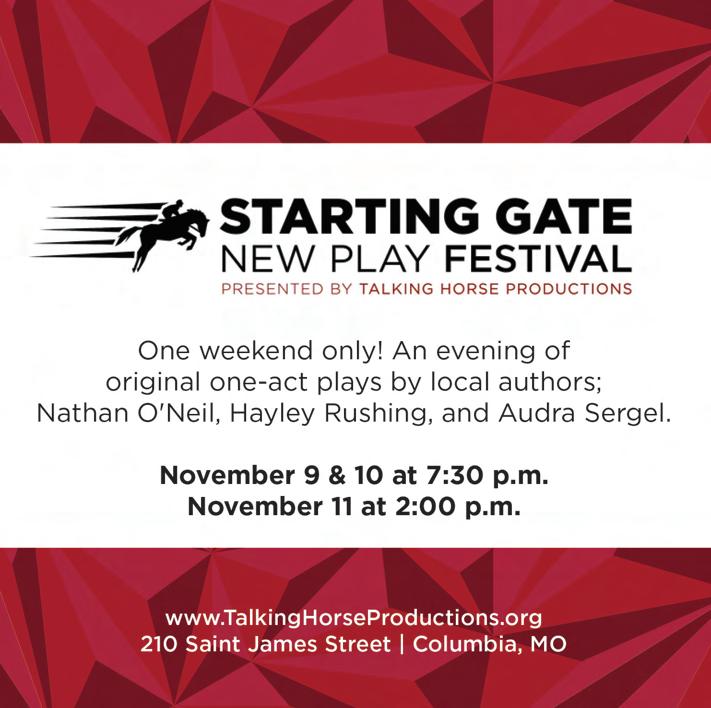
In addition to selling individual packs of the tortillas, El Patrón uses them in its authentic Mexican dishes. If you’re looking for typical Tex-Mex fare at the Moraleses’ restaurant, you won’t find it.
“If you were in the mood for fajitas, you could basically go anywhere,” José says. Their restaurant stands out because of its homestyle, classic Mexican food. At El Patrón, you’ll find menudo, a traditional soup made with beef stomach, and tacos with a myriad of ingredients, including cow tongue, called “lengua de res.” The menu also includes pork with jalapeno verde, zucchini with cheese, shredded beef barbacoa and tamales every other Saturday.
Jake and Chelsea Davis sell El Patrón’s tortillas in their store, the Root Cellar. Jake says they schedule their pickups around lunchtime so they can stop in the restaurant to eat.
He says they had been searching for delicious, locally sourced tortillas to include in their lineup, so it was a natural fit when they found El Patrón. Now Root Cellar includes the tortillas in its Ploughman’s Box, one of the store’s three subscription grocery bundles, while also stocking them in the store.
Davis says people are excited the tortillas are made so close to home. “We have a lot of average walk-in customers who are happy to get fresh, local tortillas,” he says.
About 125 families receive the tortillas in the Ploughman’s Box, Davis says. Other people, however, go out of their way for El Patrón.
Larry Doyle says once he found out El Patrón made their tortillas daily, he began driving in from Fulton every couple of weeks to buy the $2 pack. Besides the taste and the freshness, Doyle says he appreciates that the recipe comes from south of the border.
“I truthfully love that it’s run by people from Mexico,” he says. “You can’t beat authentic Mexican food.”

36 VOX MAGAZINE • NOVEMBER 2018 EAT + DRINK
On your radio dial at 89.5 fm or live streaming at kopn.org KOPN 89.5fm...Where Else? It’s
radio,
community radio.
not just
it’s
84 million Americans Maybe even you, have prediabetes.
Guy-who-thinks-teamjerseys-are-formal-attire.
Fellas, fashion forward

Layer wools, tweeds and mohair blends as the autumn chill settles in.
BY NOAH MCGEE

Shades of brown, ’90s vibes and tartan twills dominated the men’s fall and winter 2018 runways during February’s fashion week. Now, Columbia menswear shops have lined their shelves with the season’s latest fashions from custom suits to cool graphic tees.
For The Greens Co, a creative boutique that just celebrated its first year in town, paying attention to details that bring pieces to life has been the focus for what’s new on the shop’s racks. “Everything is moving into really technical cut-and-sew pieces,” says store owner and lead designer Marquise White.
Flannels are an essential look for any fall season. Don’t want to use the handme-down from your dad or older brother? Don’t worry; elbow-patched plaids and checked wools abound at local shops. Pair a button-down with a basic tee for an effortless way to add a layer of warmth.

Casual wear, such as neutral-colored coats and loafers, marched down New York runways. Bingham’s Traditional Clothing offers similar styles, but from clothing markets that other mid-Missouri stores won’t carry. Fits are more trim this season, owner David Danuser says. The shop stocks heavy tweeds, flannel suits and corduroy pants if you’re looking for that professional or business casual cut.
Instead of spending time combing through large chain stores this autumn, curate your own looks for the cool months ahead based on these local finds.
38 VOX MAGAZINE • NOVEMBER 2018
IT’S NOT POT P.40 WARM UP YOUR WORKOUT P.42
Photography by Derek Rieke and courtesy of Vaping 260/Flickr




39 CITY LIFE FASHION
VOX MAGAZINE
NOVEMBER 2018
Photography by Derek Rieke
•
Above: Add tasseled leather loafers to your favorite faded denim to dress up weekend looks. Right: Light and dark browns are taking over fall collections. Pair the versatile hue with light-wash denim and leather kicks or suede boots. Below left: Forget the old tee under a collegiate tweed; add a soft cotton Oxford button down for a more professional twist. Below right: Elbow patches have made a comeback. Finish the look with dark-wash jeans.
ABCs of CBD
It comes from cannabis but won’t get you high. This health trend is in Columbia, and there’s a lot to learn.
 BY BRANDON HILL
BY BRANDON HILL
While more and more states take the issue of marijuana legalization to voters — including medical marijuana ballot measures here in Missouri — CBD, a related product, has come into the spotlight. As a growing natural health trend, CBD has drawn the attention of those seeking the benefits of medical marijuana without the high. Kristen Williams, owner and founder of a natural wellness company, Hempsley, began using CBD to relieve the physical symptoms manifested by her anxiety.
“If I wake up feeling like that, I use CBD because I don’t want to get high, that’s not my purpose with it,” she says. “I want to be able to function, and so if I use some CBD I’m much more at ease.”
Within the last year, two CBD shops, American Shaman and Sacred Leaf, have opened in Columbia. For all you need to know about the growing presence of CBD, Vox sought out the answers.

What is CBD?
CBD is short for cannabidiol, which is a compound present in both marijuana and hemp plants. CBD and tetrahydrocannabinol (THC) are the two most widely known such compounds, but unlike THC, CBD doesn’t cause a high.
Is CBD legal in Missouri?

A 2014 state law placed regulations on “hemp extracts,” which were defined as products containing more than 5 percent CBD and under 0.3 percent THC. These extracts are available only to epileptic patients with a neurologist’s approval for a




CBD products come in different forms, including solutions and gummies to be taken orally and creams and lotions to apply to skin.
hemp extract registration card. The products sold by Missouri retailers contain CBD and THC concentrations that are low enough to not be regulated by the state law.
What does CBD do?
Because CBD is not regulated by the Food and Drug Administration, and government regulations have made funding difficult, little research has

40 CITY LIFE FAQ
VOX MAGAZINE • NOVEMBER 2018
Photography by Shauna Yates
LISTEN LIVE AT Q1061.COM • DOWNLOAD THE Q 106.1 MOBILE APP /Q1061HITS @Q1061 MID-MISSOURI’S HOME FOR ALL THE HITS!
been done on its effects. Proponents of CBD say it can help with ailments including chronic diseases, insomnia, depression, multiple sclerosis, arthritis and nausea. The one drug containing CBD approved by the FDA treats severe cases of epilepsy.
How do people use CBD?
Shelves at American Shaman and Sacred Leaf are stocked with oils, lotions, chewables, vape juice and even soaps. CBD concentration can vary widely across products, and different methods of use or consumption are available. Prices range from $10 chewables to more than $100 topical creams.
Why do people use CBD products?
“A lot of people who do use it, use it for pain or anxiety,” says Savannah Foos, general manager of Sacred Leaf. “And there are people out there who just use it for a general sense of wellness.” Foos says most of her customers are 30 to 80 years old and heard about CBD through word of mouth.

Jordan Singleton uses CBD products to help alleviate symptoms of anxiety and depression. “I used just a little vape juice, and the change was, like, drastic,” he says. “My mood was a lot better, and I was a lot more calm and level-headed.”
Is CBD safe?
Because of the lack of government regulation, consumers should read third-party lab testing results detailing the contents of the product. American Shaman owner Matthew Beard says his company provides reports that list out the active compounds found in each product.

“Initially there’s not going to be anything you see on the bottle that tells you if this is going be a good product,” Beard says. “It’s literally the Wild West right now when it comes to CBD oil in states where marijuana isn’t legal.”
The Hempsley website lists some medications that might interact with CBD, but also recommends users speak with a physician or pharmacist if they are considering using CBD products.
41 VOX MAGAZINE • NOVEMBER 2018
CITY LIFE FAQ
Photography by Shauna Yates
American Shaman is one of two shops in the Columbia area specializing in CBD products.
Shift into fall gear
Insulated biking jackets? Check. Foam running shoes? Check. Local shops have the activewear you need to stay toasty and dry during runs, long-distance bike rides and chilly hikes.
 BY MCKAYLA HELM
BY MCKAYLA HELM
Top it off
At The Alpine Shop, a staff favorite for being active is the Arc’teryx hoodie, manager Lynn DeCapo says. The polyester insulation traps body heat during the winter when she bikes to work, and the moisture-resistant fabric is a fitting topper for any outdoor activity. Fleet Feet features a lightweight nylon jacket with safety reflectors, ideal for dark fall nights. Owner Nancy Yaeger recommends layering a Smartwool long-sleeved shirt under one of these jackets for odor-free warmth.
Below the belt
Trail running is becoming more popular, Yaeger says. “People are trying it because it’s a little less on your joints, and you slow down a little bit so it’s not so hard on your body.” The Zero-Gravity EVA foam in Swiss brand On’s running shoes protects your joints, while the wide-toe box of Hoka trail shoes reinforces your natural step. Patagonia’s biking shorts have added seat support for the days when you up your mileage on the trail.

The wild side
String up the hammocks during a camping trip to stay cozy. ENO has two-person hammocks in new geometric and tie-dyed patterns. Alpine Shop customer

Derek Kerley says he likes using his lightweight ENO hammock while camping because of the SlapStraps for tree-to-tree suspension. If you’re just looking for gear to carry your items while you hike, try a small Patagonia hip pack. The larger Osprey pack, with a built-in water reservoir, provides functional packing space. Whichever one you pick, make sure to take advantage of the changing leaves. Kerley says, “In the fall, it is nice to just be under the stars in the tent.”

42
VOX MAGAZINE • NOVEMBER 2018
Photography by
ENO DoubleNest Hammock, Alpine Shop, $69.95
Osprey Raptor 10 Pack, Alpine Shop, $130
Patagonia Lightweight Travel Mini Hip Pack,
Smartwool NTS Mid 250 Crew Baselayer, Alpine Shop, $95
Brooks LSD Jacket, Fleet Feet, $105
Men’s Arc’teryx Atom LT Hoody, Alpine Shop, $259
running shoes, Fleet Feet, $140 Endless Ride Liner Shorts, Alpine Shop, $79
CITY LIFE FITNESS
Men’s Hoka Speedgoat 2 trail shoes, Fleet Feet, $140
TO-DO LIST
Your curated guide of what to do in Columbia this month.
CULTURE
Charles J. Shields
Acclaimed biographer and New York Times bestseller
Charles J. Shields presents his latest book, The Man Who Wrote the Perfect Novel, the story of author John Williams and his writing.
Oct. 26, 7–8:30 p.m., Skylark Bookshop, Free, 777-6990
Marian, or the True Tale of Robin Hood
What if Maid Marian was the one underneath the hood? The Stephens College Playhouse Theatre Company presents this gender-bending tale following Robin Hood and her merry (wo)men. Oct. 26 and 27, 7:30 p.m.; Oct. 27 and 28, 2 p.m., Macklanburg Playhouse, $16; $8, seniors and students, 876-7199
The Columbia Scene
Orr Street Studios displays original artworks designed to reflect the characteristics of Columbia. Artwork is exhibited and sold to perspective buyers, photography and digital work is not included. Oct. 28–Dec. 2, Orr Street Studios, Free, 875-4370
Ailey II
Witness the extraordinary choreography and captivating spirit of Ailey II, originally called the Alvin Ailey Repertory Ensemble, a dance group that embodies the ideals and visions of the
choreographer Alvin Ailey. The group has dominated the stage for more than 40 years. Go to the show, and see why. Oct. 30, 7 p.m., Jesse Auditorium, $18–38, 882-3781
Fever/Dream
A modern-day retelling of Pedro Calderón de la Barca’s Life is a Dream, this production follows a man named Segis as his life is interrupted with an important discovery: He’s the heir to a business empire. Oct. 31–Nov. 3, 7:30 p.m.; Nov. 4, 2 p.m., Rhynsburger Theatre, $16, 882-7529
LaTanya McQueen
MU alumna LaTanya McQueen returns to share
work from her latest essay collection, And It Begins Like This, which came out earlier this month and explores black female identity. Nov. 1, 7 p.m., Ellis Library Room 114, Free, 884-7773
First Fridays
Galleries, shops and businesses will connect the community with music, art, activities and refreshments on the first Friday of each month. Nov. 2; Dec. 7, 6–9 p.m., North Village Arts District, Free, 442-2999
Community United Methodist Church Annual Craft Show
Over 50 local crafters showcase their products alongside a bake sale and
light lunch. All proceeds from booth rentals and food sales go toward local, national and international organizations that work with childhood education.
Nov. 3, 8 a.m. to 3 p.m., Community United Methodist Church, Free, 445-6131
Sans Merci
A contemporary drama by Johanna Adams, this production follows a woman who survived rape and attempted murder by South American revolutionaries during a dangerous humanitarian mission. The mother of another victim visits her three years later, and together they must cope with the loss of her daughter and figure out the truth of what happened. Nov. 8–10, 7:30 p.m.; Nov. 11, 2 p.m., Warehouse Theatre, $8; $6, students and seniors, 876-7199
DON’T MISS IT
Citizen Jane Film Festival began in 2005 as a lecture series and aims to fight gender inequalities in the television and filmmaking industry. Nov 1–4, prices vary, 815-5849

A Certain Madness
Join the MU Theatre Department for a night of opera and mystery. Student composer Hans Bridger Heruth debuts his production based on Sir Arthur Conan Doyle’s famous Sherlock Holmes novels.
Nov. 9 and 10, 7:30 p.m., Rhynsburger Theatre, $5; Free for MU students with ID, 882-7529
Missouri Contemporary Ballet Intersections
In its 13th season, Missouri Contemporary Ballet inspires with a repertoire performance titled “Intersections,” which combines creative talents from a diverse set of
43
VOX MAGAZINE • NOVEMBER 2018
Photography by Connie McCollum/Archive
CALENDAR
choreographic masterminds, including Missouri
Contemporary Ballet’s artistic director Karen Mareck Grundy and resident choreographer Fernando Rodriguez. Nov. 16 and 17, 7 p.m., Missouri Theatre, $28–48, 882-3781
Socrates Café
Let’s get philosophical. The Columbia Public Library hosts a discussion where participants consider and debate thought-provoking topics from Christopher Phillips’ book Socrates Café: A Fresh Taste of Philosophy. Nov. 20, 7–8:30 p.m., Columbia Public Library, Free, 443-3161
CIVIC
Christian Fellowship Church Trick-or-Treat Fall Festival
Looking for a safe and fun alternative to trick-ortreating? Come out and join the party, which includes a costume competition, food trucks, bounce houses, candy and games. Wear your costume, but keep it nonscary Oct. 31, 4:30–7:30 p.m., Christian Fellowship Church, Free, 445-8561
Mid-Missouri Masquerade Scholarship Ball
The graduate chapter of Zeta Phi Beta Sorority, Inc., Upsilon Iota Zeta and the Missouri Restaurant Association partner to raise money for scholarships to support graduating seniors who are going to college.
Nov. 2, 8 p.m., Hampton Inn & Suites, $50, 234-2398
Sip & Swing Party with a Purpose
Pull out those dancing shoes
for this evening benefiting Wonderland Camp, a nonprofit for campers with disabilities. The event includes complimentary cocktails, gourmet food, live and silent auction pieces, and music by The i-Berrys, a Lake of the Ozarks band.
Nov. 3, 6 p.m., Kimball Ballroom at Stephens College, $125, 392-1000
Columbia Holiday Festival
This is the perfect event for you to get a jump-start on all of your Christmas shopping. Vendors come from across the state and offer a wide variety of gifts and decorations that are sure to put you in the Christmas spirit. Nov. 17, 8 a.m. to 5 p.m.; Nov. 18, 11 a.m. to 4 p.m., Columbia Exposition Center, $5, 445-8531
FOOD
Rhythm ‘N’ Brunch Sunday Funday is here.
Chill with bottomless mimosas and an all-day R&B soundtrack. The theme is heritage fest, so enjoy food and vibes from different world cultures.
Papadoo’s Soulfood Kitchen provides a brunch buffet. It’s 18+, and discounts are available with a college ID. Nov. 4, 11 a.m. to 4 p.m., Plush Lounge, RSVP for free entry until noon; $15–25, 876-0100
Black Friday Bloody Mary Bar + Sip & Shop
Process your holiday feast with crafty sips and some retail therapy, and start your Black Friday in style with DogMaster Distillery and local vendors selling homemade goodies. Nov. 23, 10 a.m to 1 p.m., DogMaster Distillery, 777-6768
MUSIC
ONA
Featured on Sirius Radio, NPR and other programs,
this band is comprised of long-time friends who share the same passion: Music. Grab a beer and enjoy the sounds of indie rock. Oct. 28, 8 p.m., Rose Music Hall, $5 in advance; $7 day of, 874-1944
Rosario Andino
One stage. One piano. One woman. After beginning her musical studies at the young age of four, Cuban pianist Rosario Andino brings her talents to Columbia. Nov. 2, 7 p.m., Missouri Theatre, $28; $23 for children, 8823781
U.S. Army Jazz Ambassadors
DON’T MISS IT
From boots to bowties, Pawject Runway gives adoptable dogs the spotlight they deserve. The event benefits Unchained Melodies Dog Rescue. Nov. 11, 3–5 p.m., Bur Oak Brewing Company, $25, 814-8073

For more than six decades, The U.S. Army Field Band has combined music and patriotism for a night of entertainment. The 19-piece ensemble, also know as America’s Big Band, will be performing contemporary jazz. Nov. 7, 7 p.m., Jesse Auditorium, Free, 882-3781
Aaron Watson
Inspired by classic country artists, Watson’s music has a honky-tonk vibe that echoes being a simple man from Texas. This show is a Salvation Army Rock the Red Kettle event, and a portion of the proceeds go to the charity. Nov. 8, 8 p.m., The Blue Note, $20, 874-1944
Stephens College Showcase Ensembles Concerts
Stephens College ensembles, The Velvetones and A Class Act Musical Theatre Troupe, perform vocal jazz and musical theater in this concert series. Nov. 11 and Dec. 11,
44
CALENDAR VOX MAGAZINE • NOVEMBER 2018
Photography courtesy of BARCS Animal Shelter
7:30 p.m., Historic Senior Recital Hall at Stephens College, Free, 442-2211


SPORTS
Friends by Heart Run for One
Get your steps in while raising awareness and money for congenital heart defect patients at St. Louis Children Hospital’s Heart Center. Friends By Heart is hosting an awareness walk/5K and a kids fun run for the cause. Oct. 27, 8 a.m. to 2 p.m., Stephens Lake, $10–40, 881-1671

Veterans Day 5K Charity Run & 2K Walk and Roll
This fall, join the first Veterans Day running event to support local VA projects in basic and clinical research. The projects improve veterans’ health and healthcare. Online registration closes on Nov. 10. Nov. 11, 9 a.m. to 1 p.m., Stephens Lake, $30; $20 ages 6-12; Free ages 5 and under, veterans and active military; $25 to sponsor a veteran or active military, 814-6555
Mizzou vs. Arkansas Football Game
Get your Black Friday shopping done in the morning, so you can root for the Tigers in the afternoon. Set out your finest blackout gameday clothes for this bitter rivalry. Nov. 23, 1:30 p.m., Faurot Field, prices vary, 882-6501
45 CALENDAR VOX MAGAZINE • NOVEMBER 2018
1800 Nelwood Dr. Columbia MO| 573.474.3699 | www.cectheatre.org November 1-4 | 8-11 2018 Adults Seniors Students Thursdays $14 $12 $12 $10 410 S 9th Street | Columbia 573-449-6927 www.theheidelberg.com Campus Tradition for over 50 years Kitchen Open Late
Painting a self-portrait
Full-time artist Jenn Wiggs helps students brush up on art and its impact on daily life.
BY GRANT SHARPLES
Jenn Wiggs, who works out of Orr Street Studios, is interested in the unseen and gravitates toward the abstract. She paints while listening to jazz, she says, because it is music’s form of abstraction, and that parallel provides inspiration. Her colorful contemporary paintings line the walls of her studio. Wiggs says she wasn’t serious about art un-
til college. There, first at Indiana University Bloomington and then at Washington University, her classes influenced her aspirations and set her life on a trajectory of producing art. “She’s one of the most dedicated artists I’ve ever met,” says Orr Street Studios Director Ivy Case. “I think if you’d cut her, then she’d bleed art. It’s in her bones. It’s in her blood.”

Wiggs spoke with Vox about her teaching, her paintings and the valuable lessons we can learn from art.
When did you become interested in art?
I took some lessons as a kid, but I didn’t get serious until college. For basic design, I had a guy named William Itter, who is an amazing artist and professor. That class changed my life instantly. I knew I was an artist, I knew this was what I was going to do, and I got really serious about it. I realized that if I were going to do that, then I had to make changes in how I lived my life. I couldn’t just stay out and drink beer and party with all my party-loving friends.
Why did you choose painting as your main medium?
If I were good at three-dimensional art, then I would have known by now. I had to take a sculpture class as a grad student, and that was hard. I don’t think in a three-dimensional way. I don’t feel like you make those choices; those choices are made for you. You don’t really choose what you make. It comes to you from someplace else, and you just go with it.
Describe your workshop, Jenn’s Schoolhouse of Big Ideas.
It was a four-week session beginning in May, and the concept for that goes back to old days in the schoolhouse where you’d have kids of all different ages, and they’d all be doing math. But it would all be at different levels, from second graders all the way through high school. I’d have a lesson about line, and there would be beginner, intermediate and advanced things you could do.
How has teaching changed you as an artist?
Teaching broadens me. When you’ve sat through a lot of classes and you’ve seen a lot of different approaches, in a sense, it channels your energies into a certain way of creating. It shifts you away from things you found that were unhelpful or that you found limiting. Teaching has made me appreciate a lot of different perspectives from students and their interests.
What can art teach us about ourselves?
Our normal lives have a lot of dust on them. Art blows that dust off. It can allow you to visit deeper ideas about how you feel about things. Art can ask questions, and questions are a great place to begin instead of taking things at face value. A lot of our lives can be superficial. It’s good to be reminded of bigger things.
46 COLUMBIA VOICES Q&A VOX MAGAZINE • NOVEMBER 2018
Photography by Derek Rieke
I’M DOING THIS FOR ME, AND FOR THAT PERSON WHO BELIEVES IN ME.”





If you’re thinking of finishing your high school diploma, you have more support than you realize. Find teachers and free adult education classes near you at FinishYourDiploma.org.
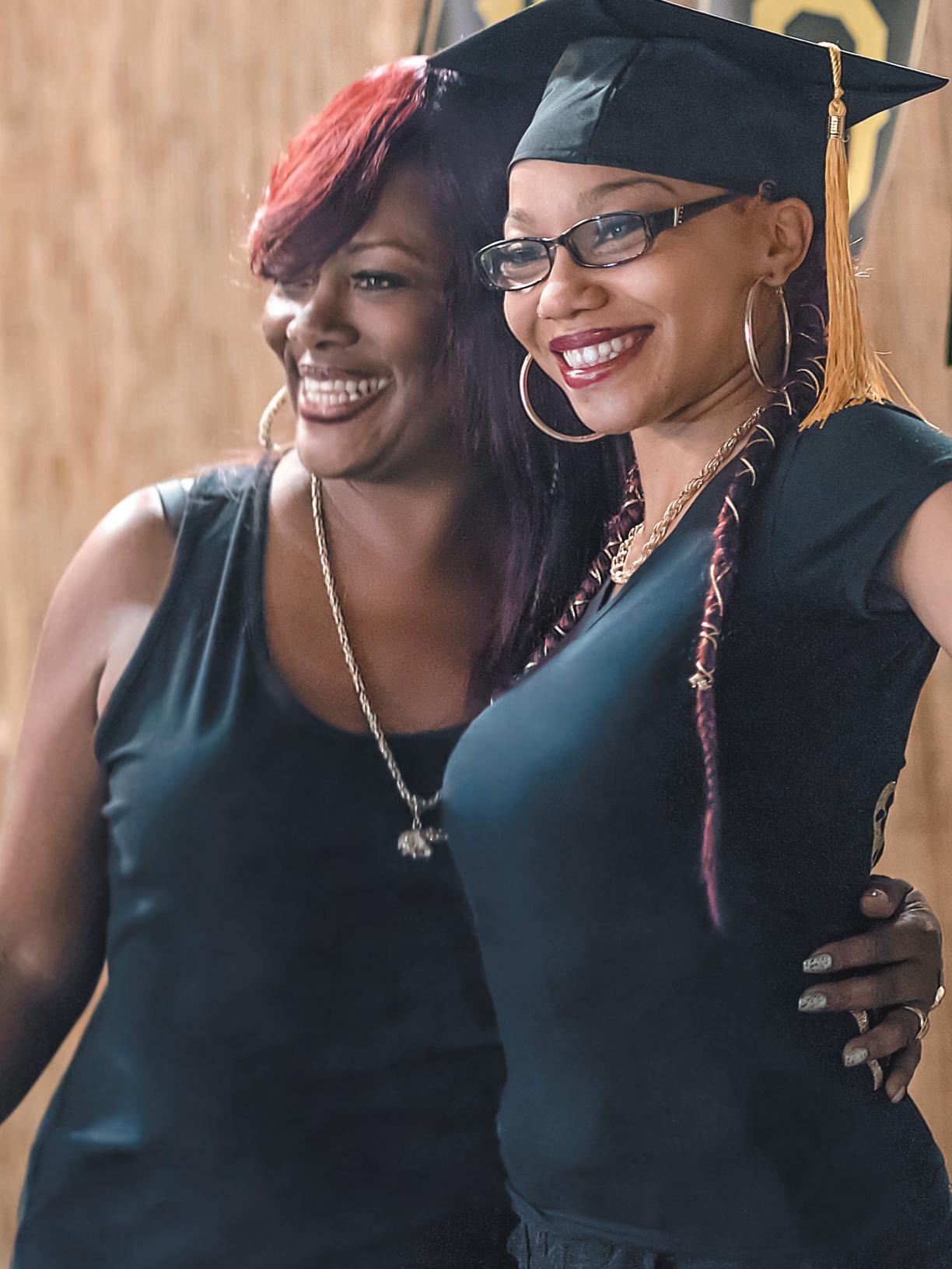
“


Theatre presents Rhynsburger Theatre Fine Arts Building, 505 Hitt St. 7:30 pm: Oct 31 - Nov 3 • 2:00 pm: Nov 4 Tickets: Rhynsburger Theatre box office, Mon - Fri, 2p - 5p (573) 882-PLAY (7529) or online at theatre.missouri.edu 2018
 THE VOICE OF COLUMBIA • NOVEMBER 2018
THE VOICE OF COLUMBIA • NOVEMBER 2018

 Columbia
© 2018 McDonald’s Corporation
Columbia
© 2018 McDonald’s Corporation




















 BY CAMDEN JONES
BY CAMDEN JONES






















 BY LUCY SHANKER
BY LUCY SHANKER






 BY CHARLIE CLARKE
BY CHARLIE CLARKE

































 BY THOMAS OIDE
BY THOMAS OIDE








































 BY RACHEL MCKEE TAYLOR
BY RACHEL MCKEE TAYLOR




 BY NOAH HIGGINS-DUNN
BY NOAH HIGGINS-DUNN










 BY BRANDON HILL
BY BRANDON HILL








 BY MCKAYLA HELM
BY MCKAYLA HELM














